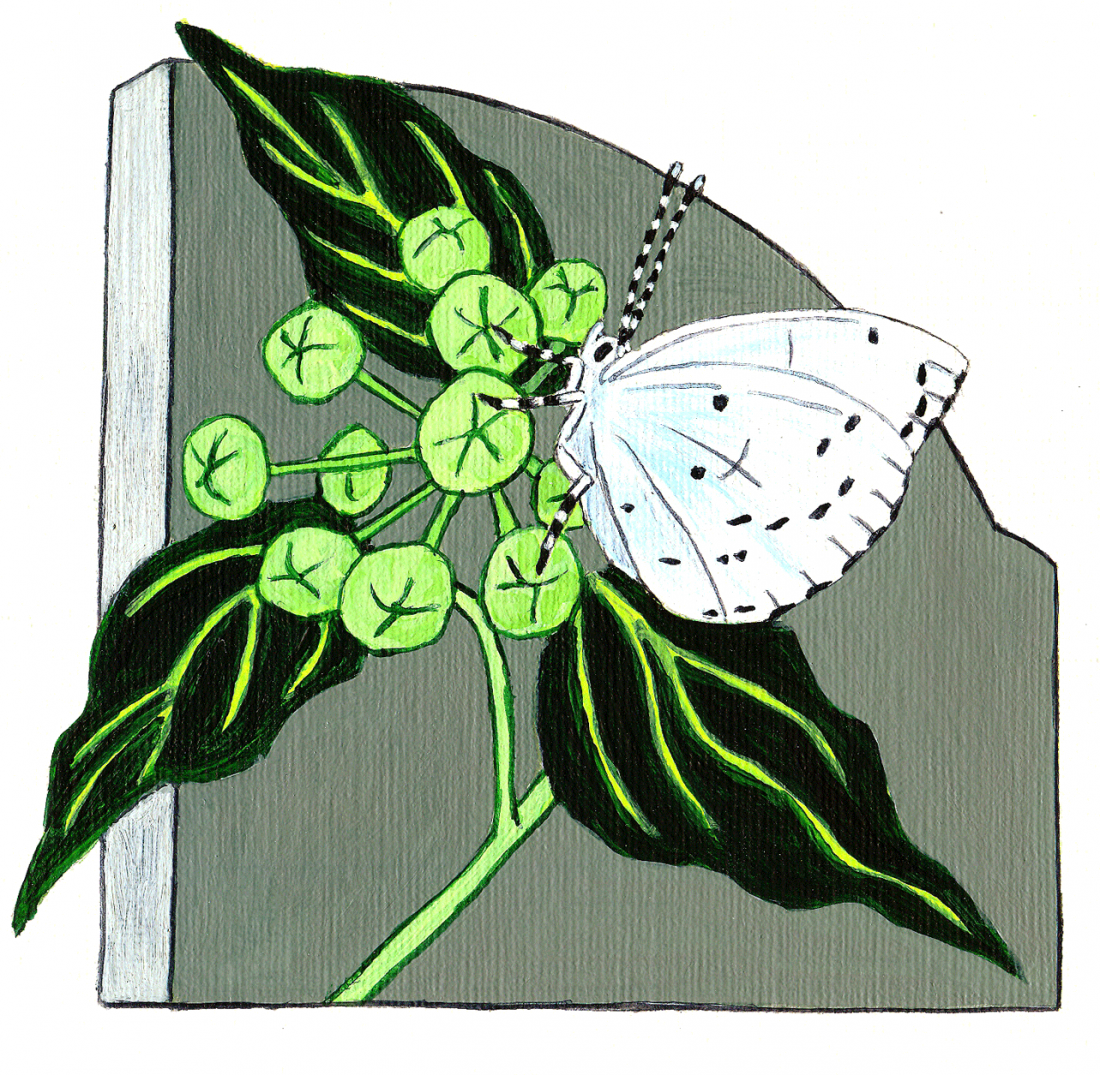Twenty-six species of butterfly have been recorded in Earlham Cemetery since 1992. The Silver-washed Fritillary is an occasional visitor, the Small Heath was seen for the first time in August 2022 and the Wall Brown is now extinct in the Norwich area.
Full list of butterflies seen in Earlham Cemetery since 1992.
Meet the Butterflies (in rough order of appearance through the year).
Comma, Polygonia c-album
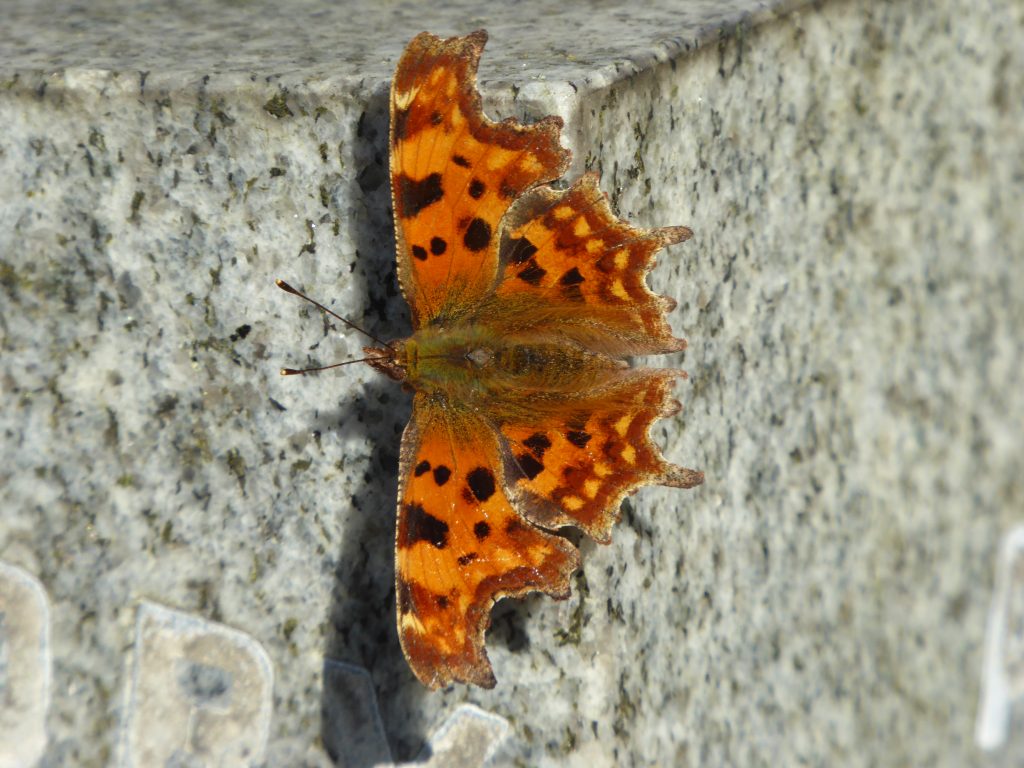
The Comma has very distinctive jagged wings. It often basks on grave stones in Earlham Cemetery and in autumn feeds on Ivy flowers before hibernating.
Comma caterpillars feed on Nettle, Elm or Hops. There are two broods of adults in a year. The spring butterflies are paler and more golden coloured and are known as form Hutchinsoni.
The butterfly’s name comes from the white comma-shaped mark on the underside of the hind wings.
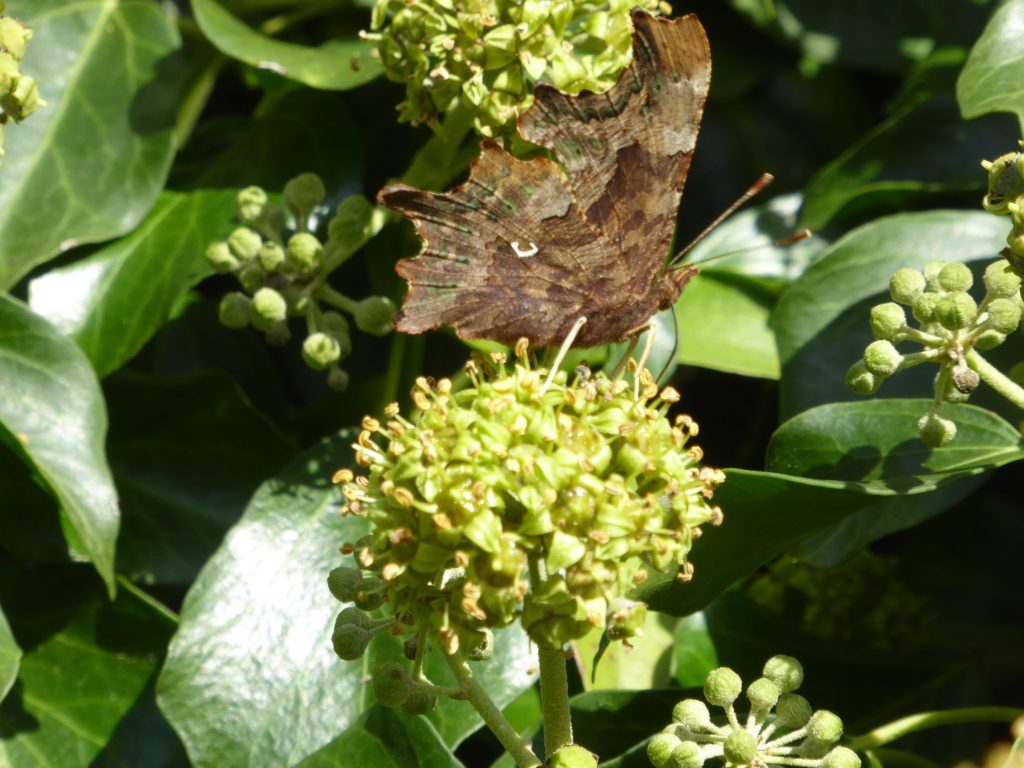
Brimstone, Gonepteryx rhamni
The sight of a male Brimstone is one of the highlights of early spring, as it flies through the Cemetery on bright yellow wings. Females are a paler light green but their wing shape is the same. Males are more likely to be seen and range far and wide in search of females. Later in the summer, both sexes can be seen feeding on flowers. The caterpillars feed on Buckthorn and Alder Buckthorn, neither of which occurs in Earlham Cemetery. Adults live for up to ten months, emerging in July or August and, after hibernation, continuing on the wing until May or even early June.
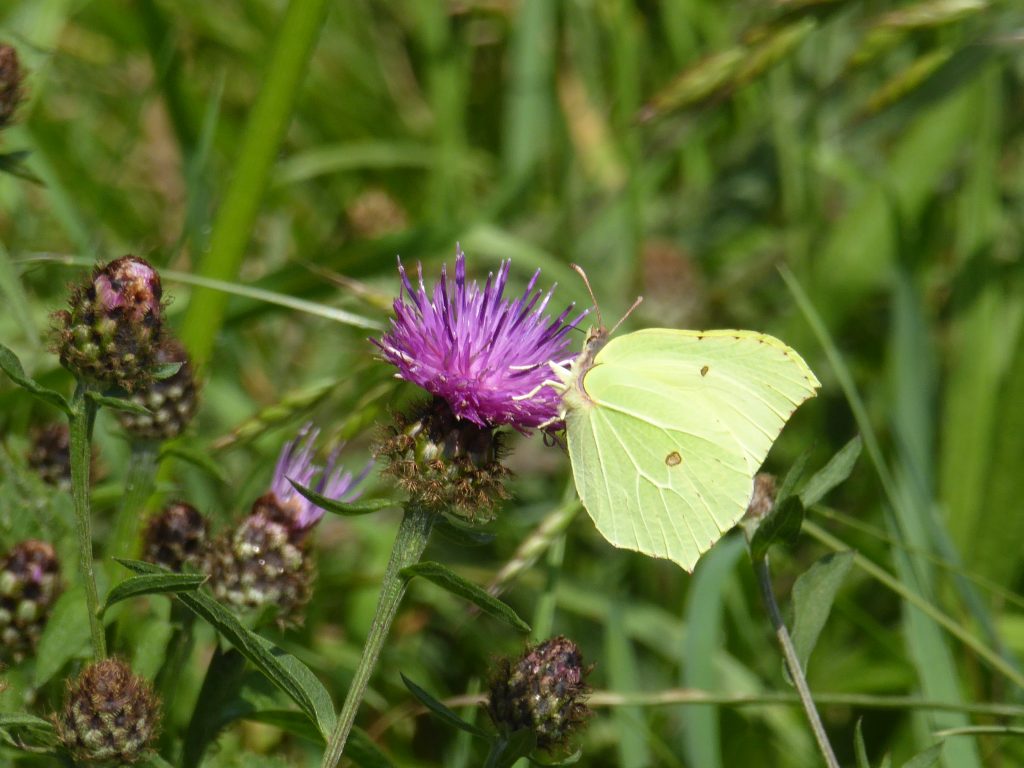
Peacock, Inachis io
The Peacock is another welcome herald of spring and can often be found in Earlham Cemetery, in a sunny glade, nectaring on Primrose flowers. Although the wings are brightly coloured, the undersides are well camouflaged and when the butterfly closes its wings it can be hard to find.
If disturbed, a hibernating Peacock butterflies will rub its wings together to make a hissing noise and flash its wings. The combination of the noise and sudden flash of eye spots must be very intimidating for mice and other predators.
The Peacock is another long-lived adult butterfly, emerging in July and, after hibernation, on the wing until May. The caterpillars feed gregariously on nettles.
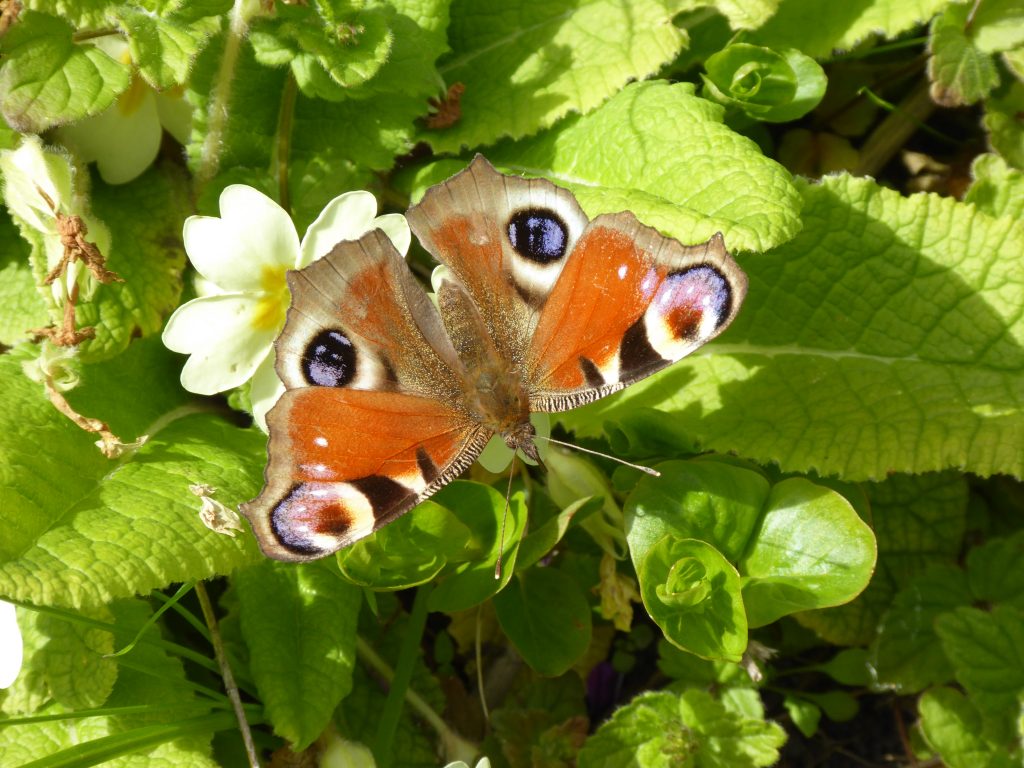
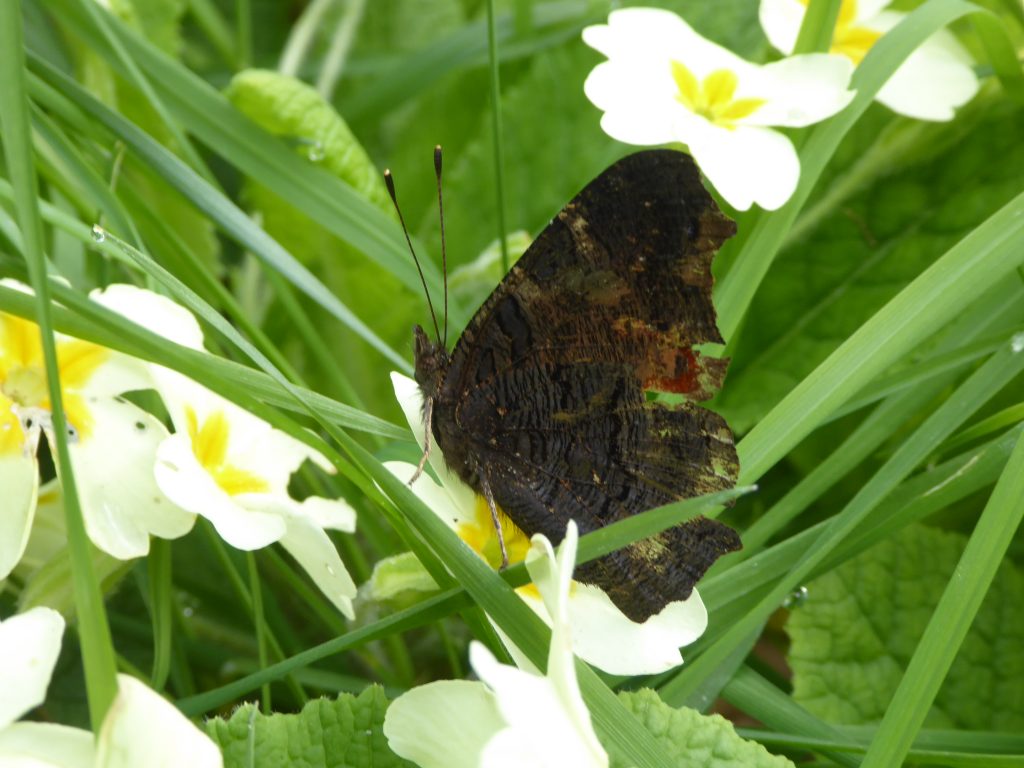
Small Tortoiseshell, Aglais urticae
Formerly a very common butterfly, but for a number of years the Small Tortoisehell was in decline in southern Britain. In Earlham Cemetery the butterfly was seen every year until 2005 but records were very sporadic from then until 2013, when numbers increased again. The decline may be linked to the spread of the parasitic fly Sturmia bella that has recently colonised the south of England. Perhaps the balance between numbers of the parasite and the butterfly have stabilised, leading to a recovery in Small Tortoiseshell numbers.
Small Tortoiseshells that emerge from August to October go into hibernation almost immediately then emerge in spring and lay eggs, which become a second brood of butterflies that emerge in June and July. Like the Peacock, Small Tortoisehell caterpillars feed on nettles.
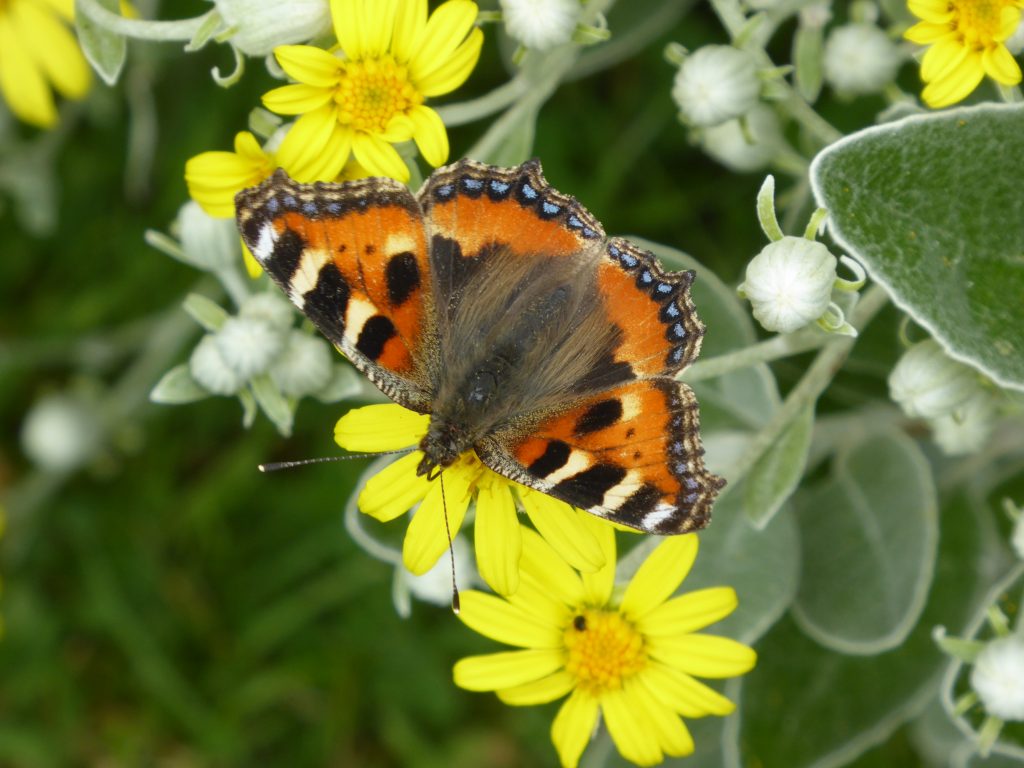
Red Admiral, Vanessa atalanta
The Red Admiral is a migrant from southern Europe. It is mostly seen from March to November and is usually common throughout England. The butterfly has a very powerful flight.
Most Red Admirals fly over to Britain in spring and early summer, but nowadays small numbers are able to hibernate here, something that has only occurred in the last twenty years or so.
Like the Peacock and Small Tortoiseshell, the female Red Admiral lays her eggs on nettle leaves. (Sometimes Pellitory-of-the-wall or Hops can be used instead.)
In early autumn Ivy flowers are very attractive to butterflies and other insects and are a good place to look for Red Admirals.
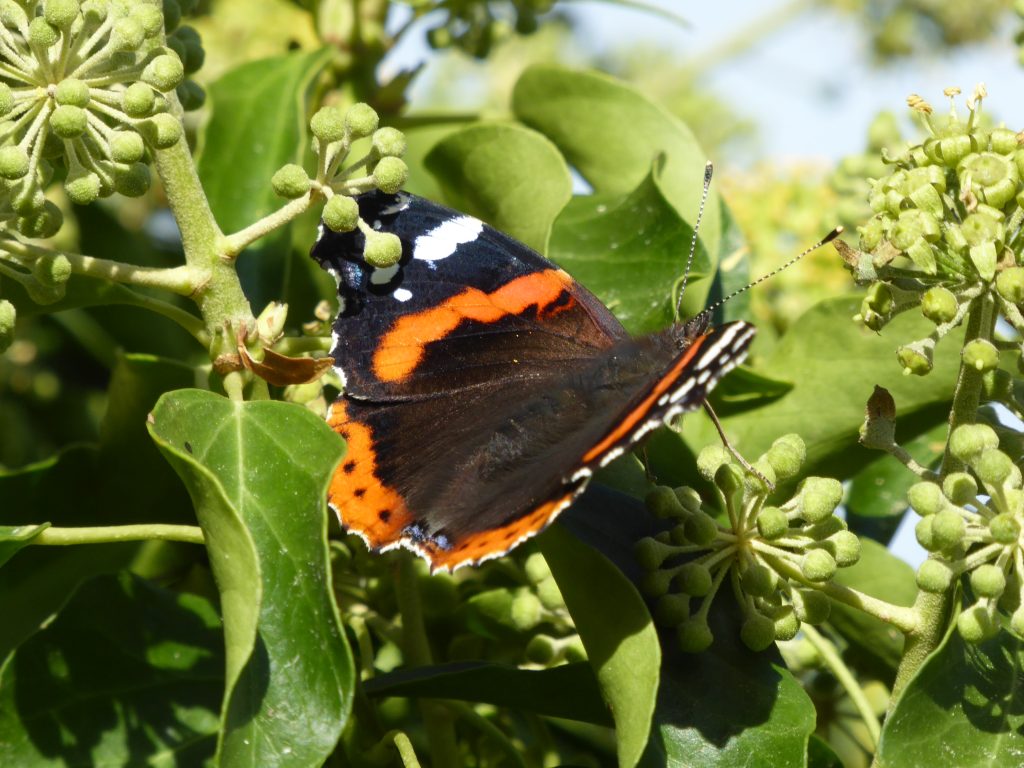
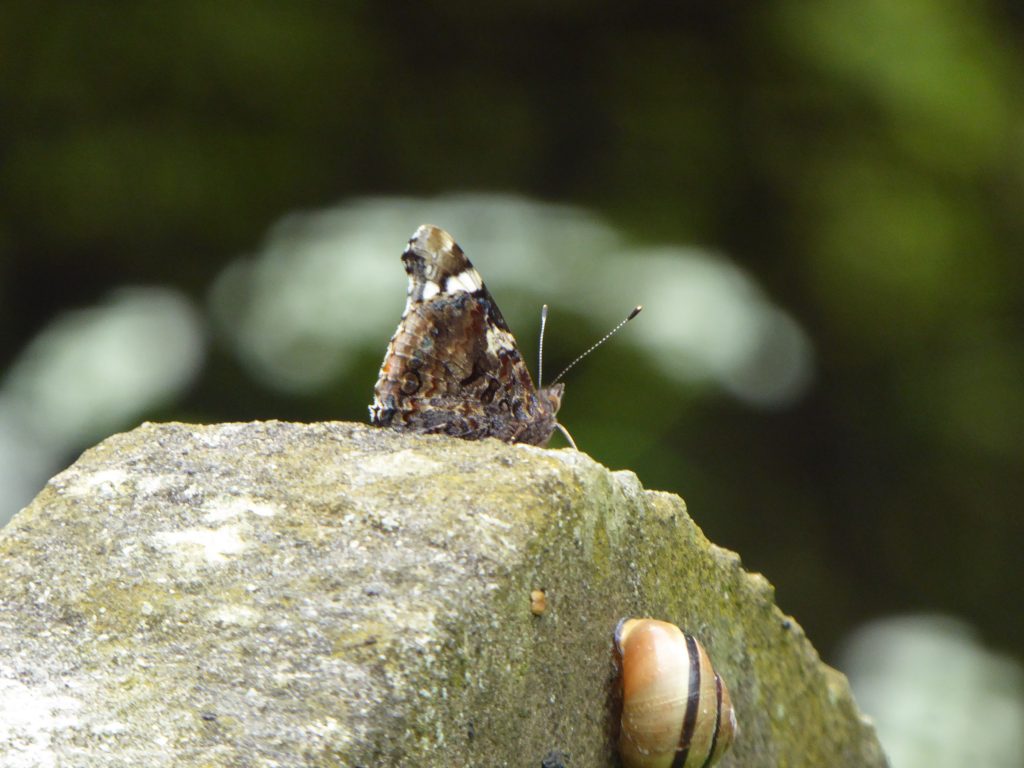
Speckled Wood, Pararge aegeria
The Speckled Wood is usually the next butterfly on the wing in Earlham Cemetery, seen from late March or April onwards. It is also one of the last species on the wing each year, flying into late October or, in a warm autumn, mid November. It is able to overwinter either as a larva or pupa, and there are usually three broods of Speckled Woods in a year, so it can be seen most months.
Many species of butterfly have suffered from management changes to our countryside during the last century, when woodlands became less sunny and grazing was reduced. However, the Speckled Wood has done well because it is happy in shade as well as sun and its caterpillars can feed on a range of different grasses.
The Speckled Wood colonised Earlham Cemetery in the mid 1980s during a rapid expansion of range in Norfolk. It is now one of the most numerous butterflies in the Cemetery.
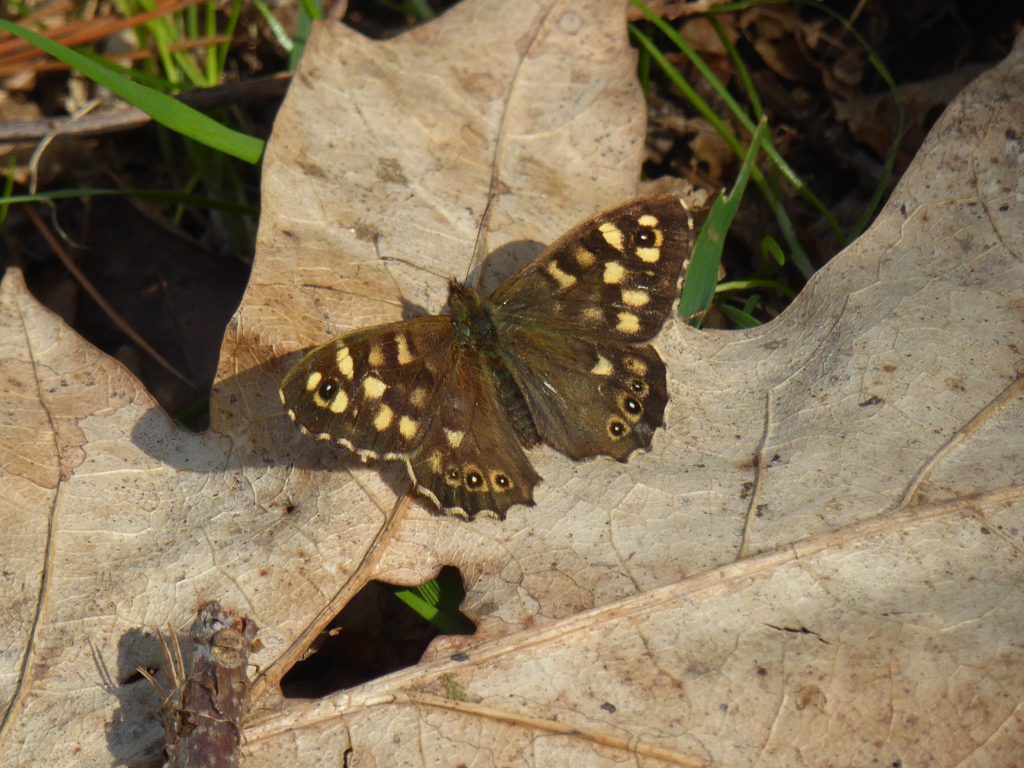
Orange-tip, Anthocharis cardamines
The Orange-tip is one of our loveliest butterflies and a sign that spring has truly arrived. The first butterflies emerge in early April and the species can be seen until early June, flitting along the paths and stopping to feed on flowers such as Green Alkanet.
Like the Brimstone, the Orange-tip is one of the whites (family Pieridae). Its caterpillars feed on Garlic Mustard and Cuckoo Flower, both of which occur in Earlham Cemetery.
The eggs are orange and quite easy to find, with practice. The caterpillars are slim green cannibals and although there may be several eggs or small caterpillars on a single foodplant, eventually there is just a single larger caterpillar.
The butterfly’s name comes from the orange tips to the wings, but these are only on the males. Both sexes have mottled green hindwings, which help to camouflage the butterfly when it is resting.
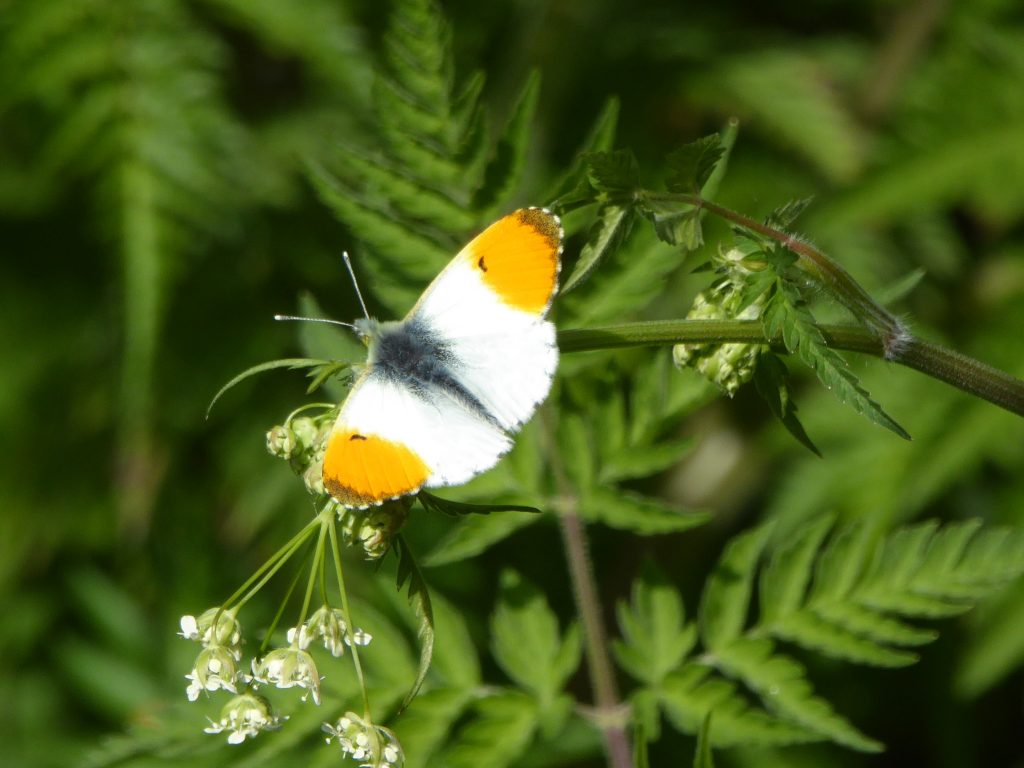
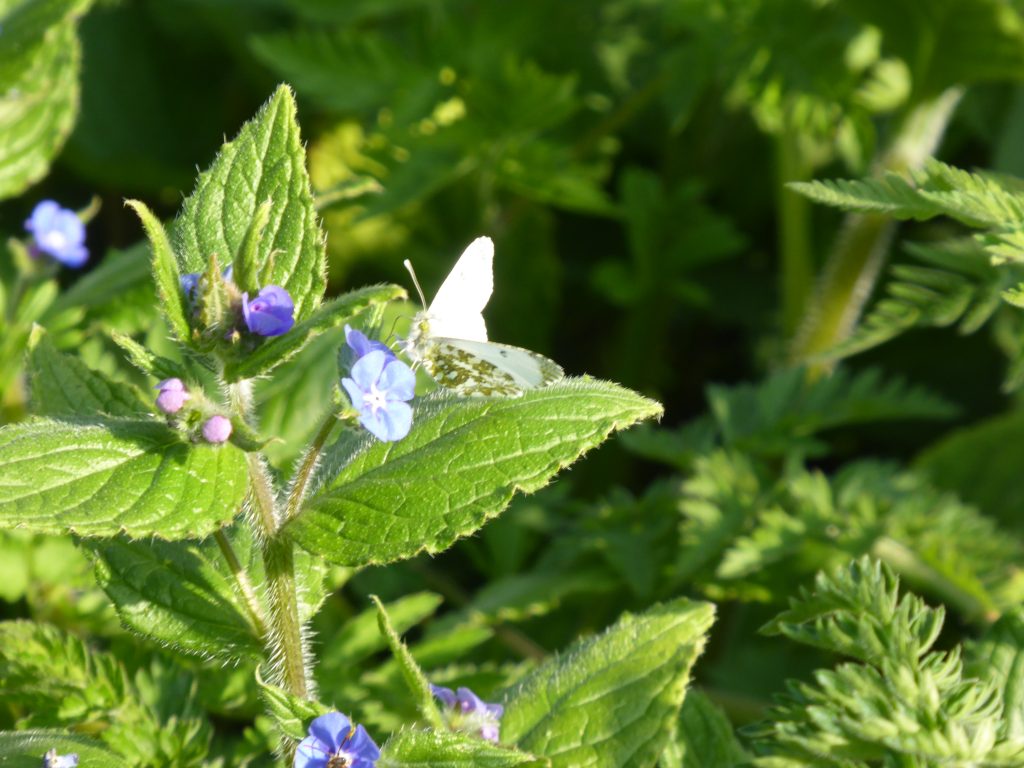
Large White, Pieris brassicae
There are three more species of white butterfly that can be seen in Earlham Cemetery: the Large, Small and Green-veined White.
The Large White is the largest species. It has two broods in a year and numbers are often supplemented by immigrants from the continent. The female’s wings have more black markings than the male and the summer brood markings are more prominent than those of the spring brood.
The caterpillars feed on a variety of brassicas, including cultivated cabbages, broccoli, kale and Brussels sprouts. They are distasteful to birds and feed out in the open on top of the leaves.
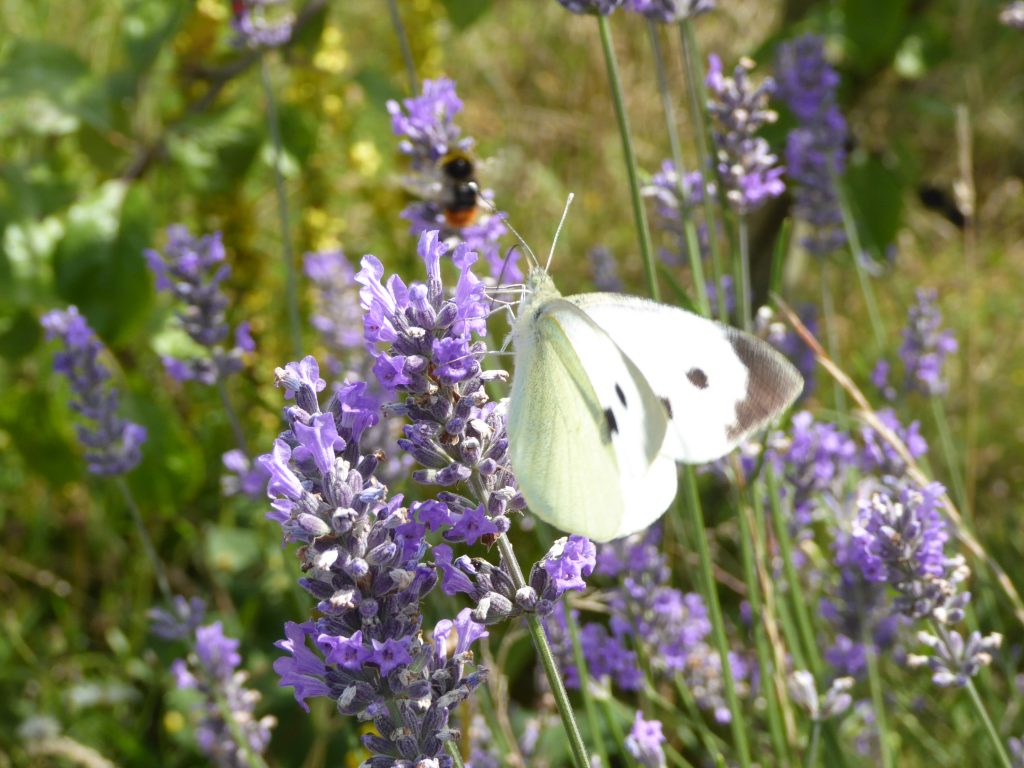
Small White, Pieris rapae
The Small White looks like a smaller version of the Large White. Its caterpillars also feed on brassicas, but are less conspicuous and often hidden between the leaves of the food plant.
There are two broods per year, supplemented by migrations from the continent, but to a lesser extent than the Large White.
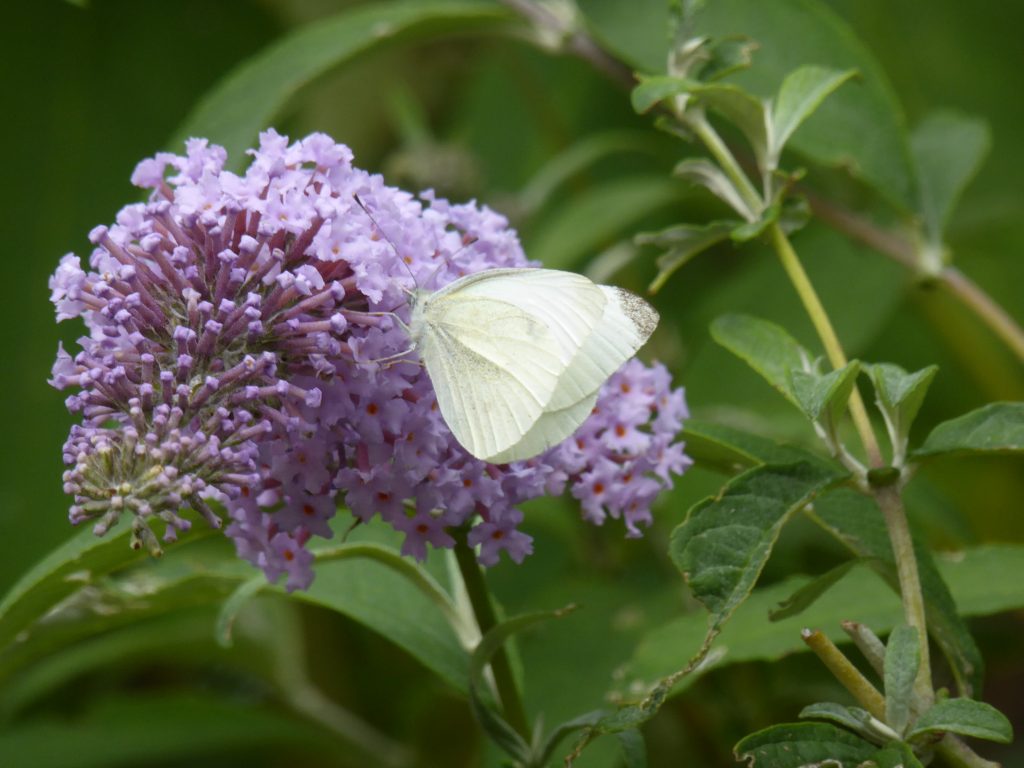
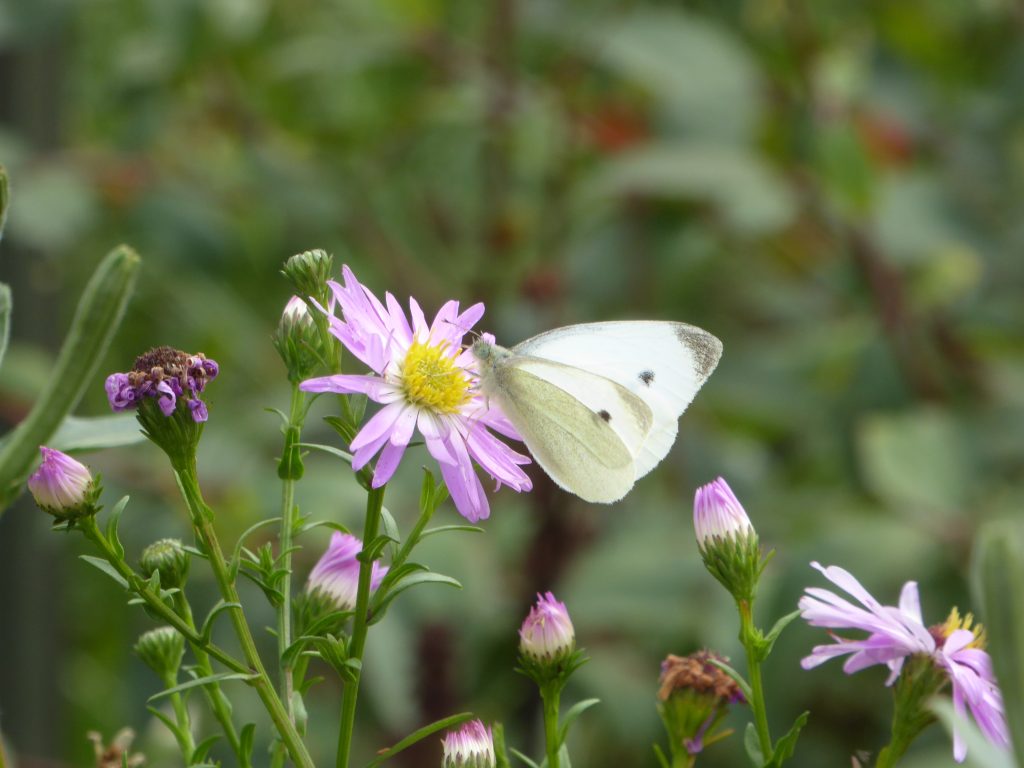
Green-veined White, Pieris napi
The Green-veined White is daintier in appearance than the Small white, though of a similar size. Its caterpillars feed on brassicas, but unlike the Large and Small Whites, it chooses wild species, such as Cuckoo Flower and Garlic Mustard, rather than cultivated plants.
It is a sedentary species with two broods per year.
The male emits a lemon scented pheromone to attract the female and its scent is strong enough to be detectable by the human nose. Butterfly expert Jeremy Thomas calls it “lemon-scented love dust”.
The hindwings of both the Small White and Green-veined White have yellow undersides, but the Green-veined White has conspicuous veins, whereas the Small White’s wings are a plain yellow.
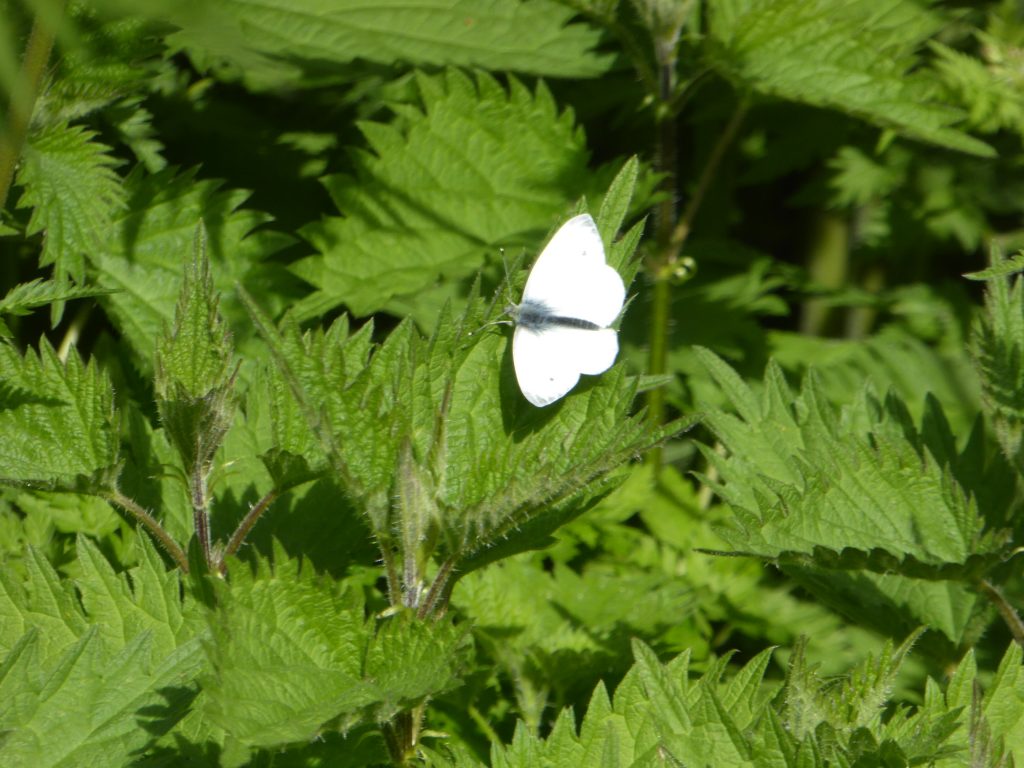
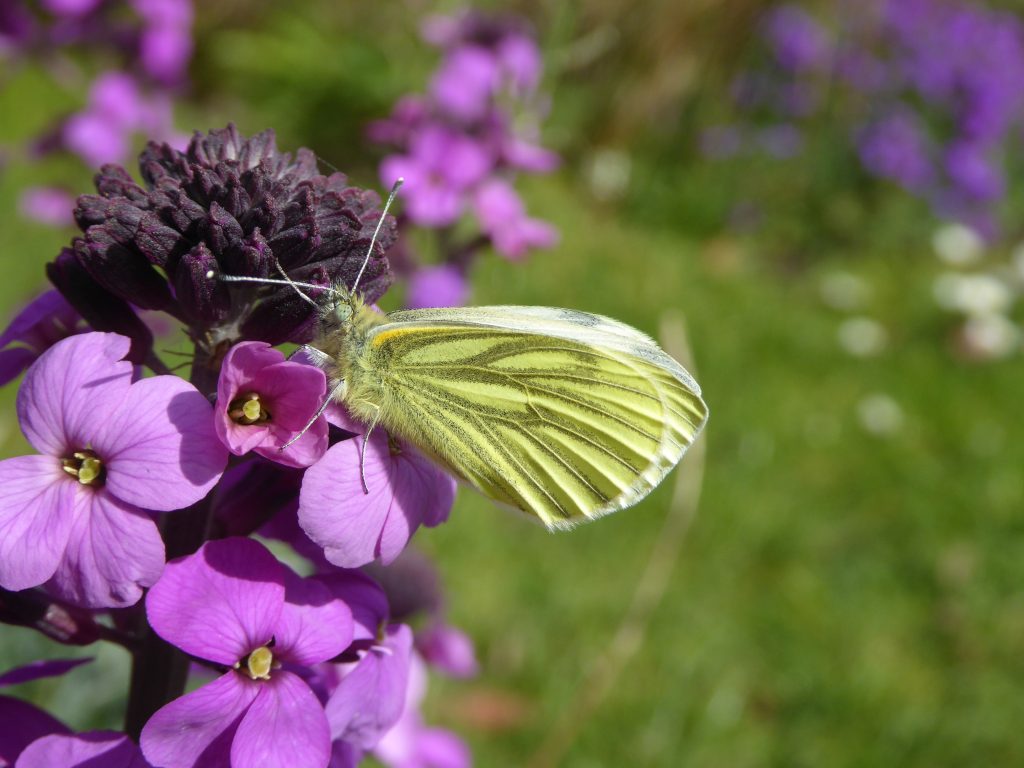
Holly Blue, Celastrina argiolus
The Holly Blue is usually the next butterfly to appear. It is a member of the family Lycaenidae, the Blues, Coppers and Hairstreaks.
The Holly Blue has two broods in a year. In Spring the female butterfly lays her eggs on the flower buds of Holly and in Summer Ivy flower buds are used. The choice of caterpillar food plants means that the butterfly is mostly found in woods, shrubby parks, gardens, churchyards and cemeteries. It is often seen in Earlham Cemetery and we have adopted it as our group’s logo.
The wasp Listrodomus nycthemerus parasitizes the Holly Blue and numbers of the butterfly vary from year to year depending on how many survive. In some years it is quite scarce.
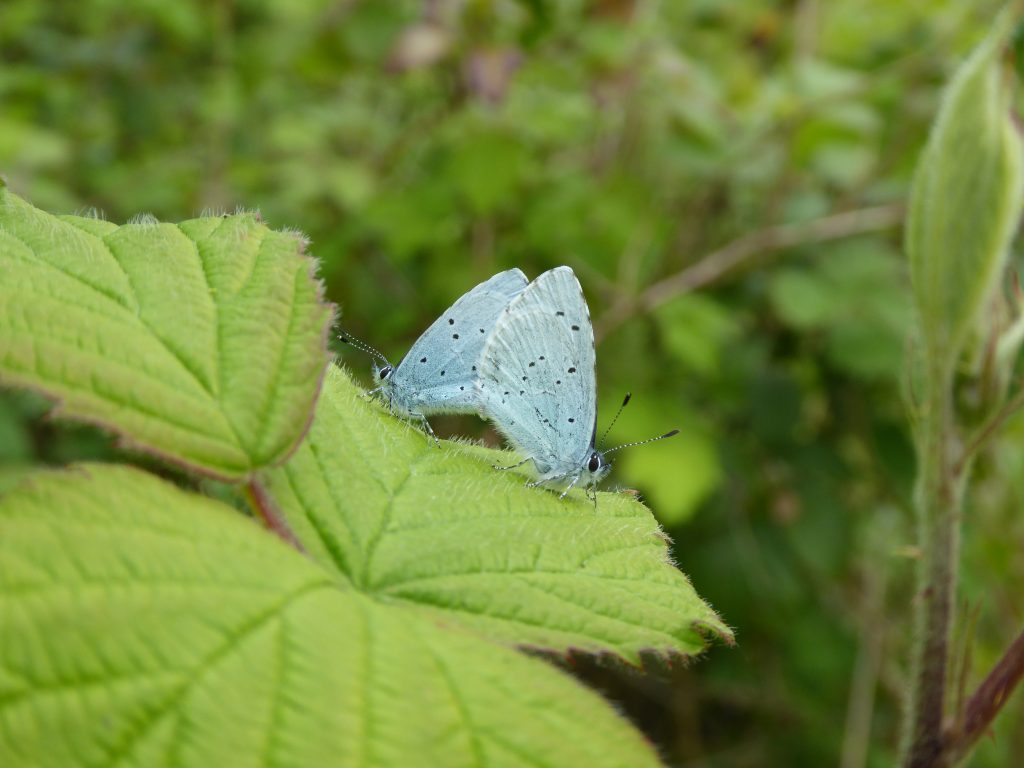
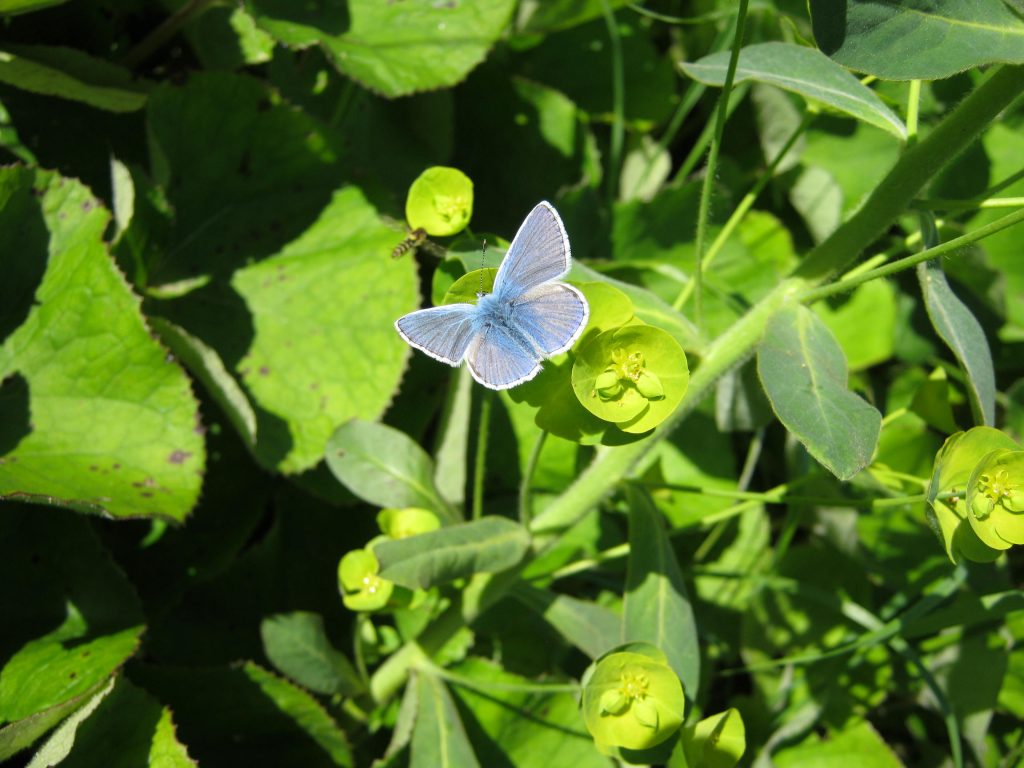
The female Holly Blue has black wing edges.
Common Blue, Polyommatus Icarus
The Common Blue is Britain’s commonest and most widespread blue butterfly. Its caterpillars feed mainly on Bird’s-foot Trefoil, but also other legumes such as Black Medick. There are two broods a year, the first appearing in May to June and the second from July to September. For many years the Common Blue was decreasing in Earlham Cemetery, but recently numbers seem to have increased, hopefully because of better management of the grassland.
Only the male is bright blue. The females’ wings are mainly brown, with just a flush of blue near the bases of the wings.
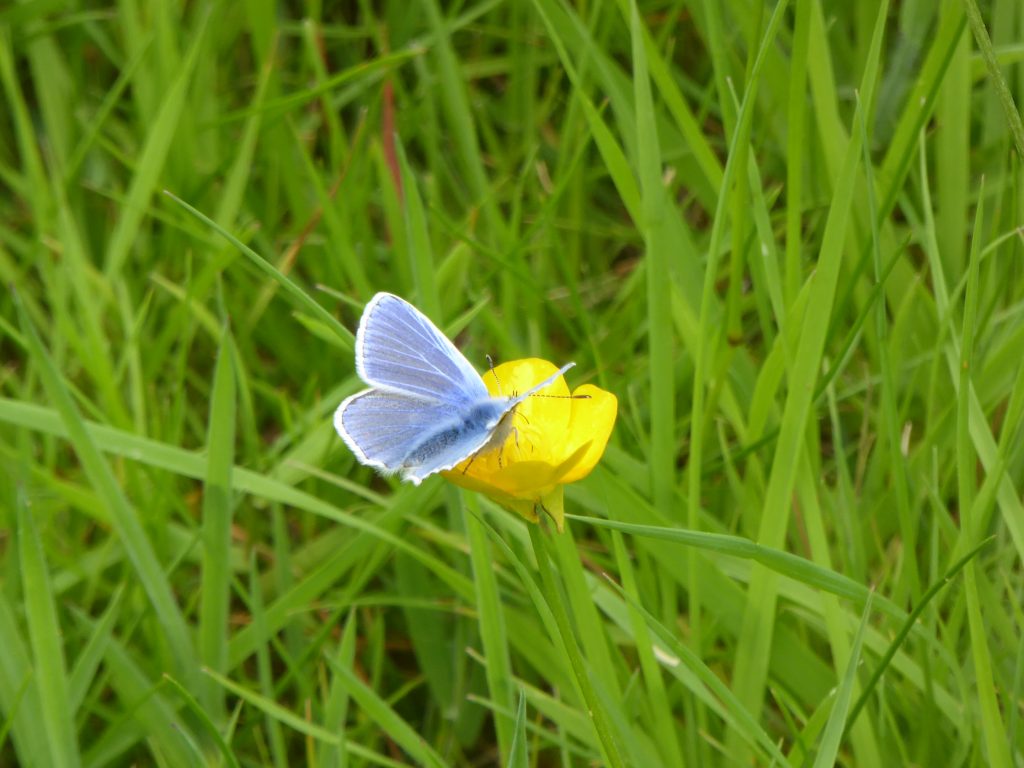
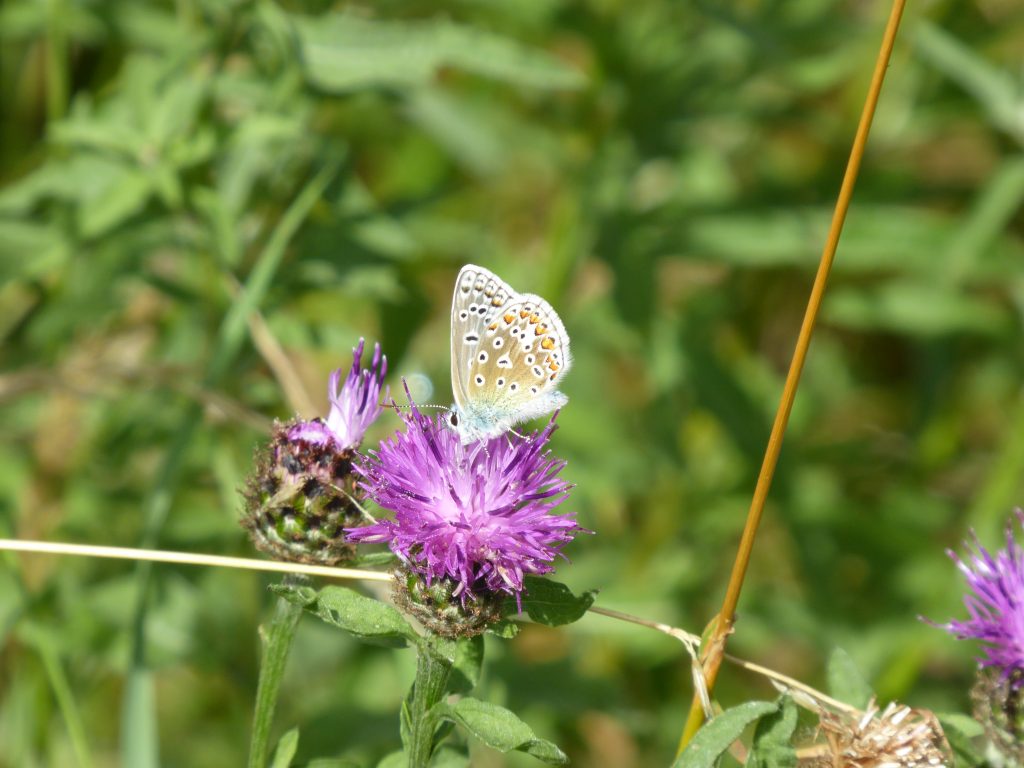
Brown Argus, Aricia agestis
The Brown Argus is another “blue” butterfly but its wings lack the blue pigmentation of the Common and Holly Blues.
It was first recorded in Earlham Cemetery in the mid 1990s when the species also began to colonise a number of other Norwich area sites. Sightings were generally sporadic but in the past few years we have seen it every year, often on Ragwort flowers in late summer.
There are two broods in a year (May to June and July to September). Brown Argus caterpillars feed on Rock Rose in chalk grassland, but in most of Norfolk the food plants are Common Stork’s-bill or Dove’s-foot Cranesbill. The latter grows in Earlham Cemetery.
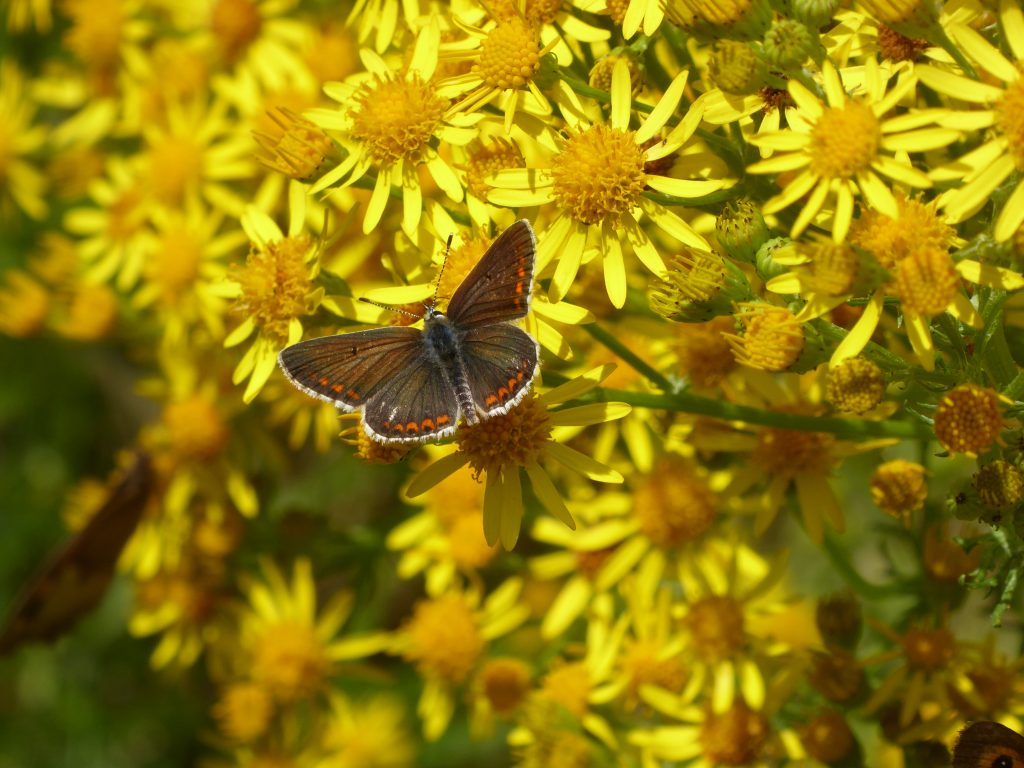
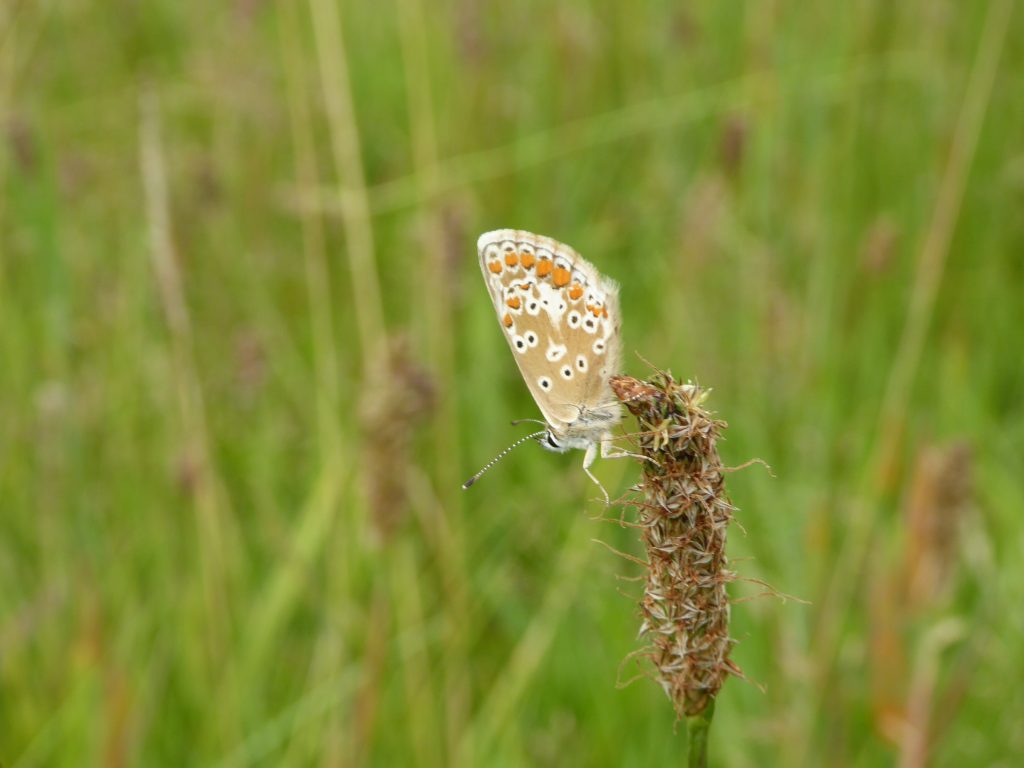
Small Copper, Lycaena phlaeas
The Small Copper is another member of the family Lycaenidae, the Blues, Coppers and Hairstreaks. It shares the wing shape of other family members but it is a very brightly coloured and lively insect.
It has three broods in a year: April to June, July – August and September – October and the caterpillars feed on Common Sorrel and Sheep’s Sorrel. Both plants occur in Earlham Cemetery, the former mainly in longer grass in the older parts of the Cemetery and the latter in short, more acidic turf. The latter is a dangerous place to be, as the short grass is cut at regular intervals during the summer months.
As with the Brown Argus, the adult butterfly is attracted to Ragwort flowers in late summer, which is when it is easiest to see.
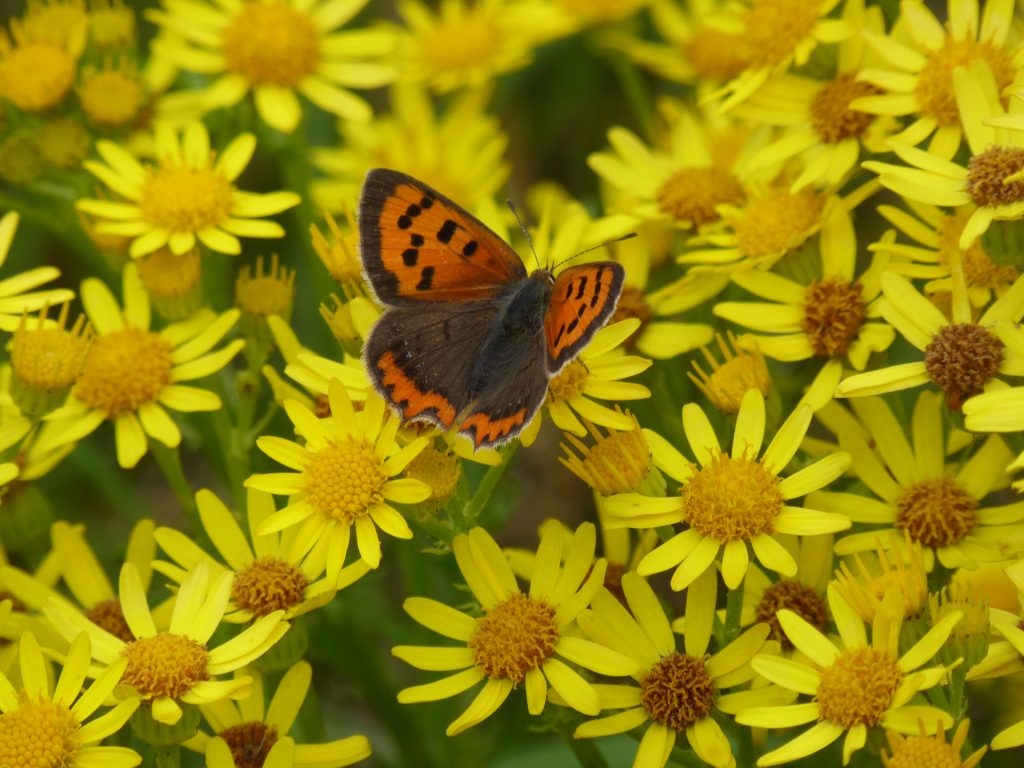
Purple Hairstreak, Neozephyrus quercus
It is unusual to have a close up view of this butterfly, which usually flies around the tops of Oak trees. It is most easily seen on a sunny afternoon in late July or early August, looking up to the tree top with the sun behind you.
The butterfly lays its eggs on Oak buds and these hatch into a caterpillar in spring, which bores into the buds and subsequently feeds on the young Oak leaves. The caterpillar produces secretions and makes a noise that attract ants and it appears that the ants will carry the caterpillar to their nest, where it pupates. This relationship with ants is shared with other members of the Lycenidae, the most famous being the Large Blue, which became extinct in Britain when grass became too long to support the species of ant it depended on for its survival.
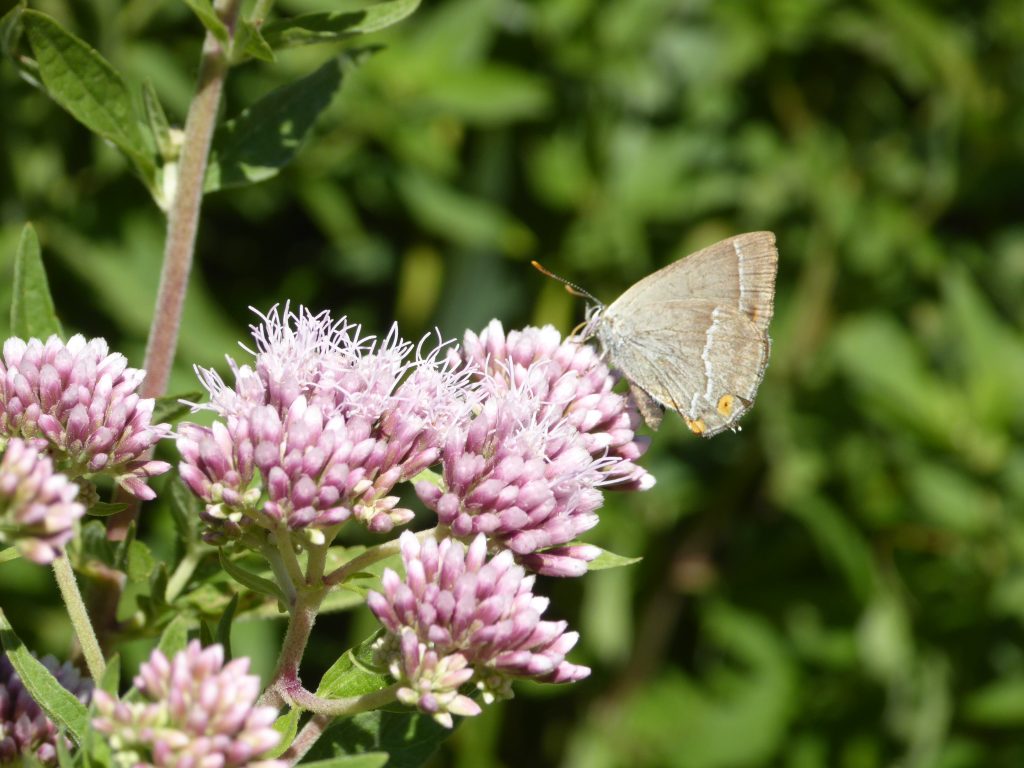
White-letter Hairstreak, Satyrium w-album
Our first White-letter Hairstreak was seen by Ian Senior on 21 July 2017, feeding on Goldenrod and Buddleia flowers. Since then single White-letter Hairstreaks have been seen on several other occasions.
This butterfly’s caterpillar feeds on elm and there were avenues of elms in Earlham Cemetery before Dutch Elm Disease struck. Nowadays there are large suckering elms in places, reaching well above head height. The eggs are very distinctive, white in colour and shaped like miniature flying saucers.
This is one to look out for, from July to mid August.
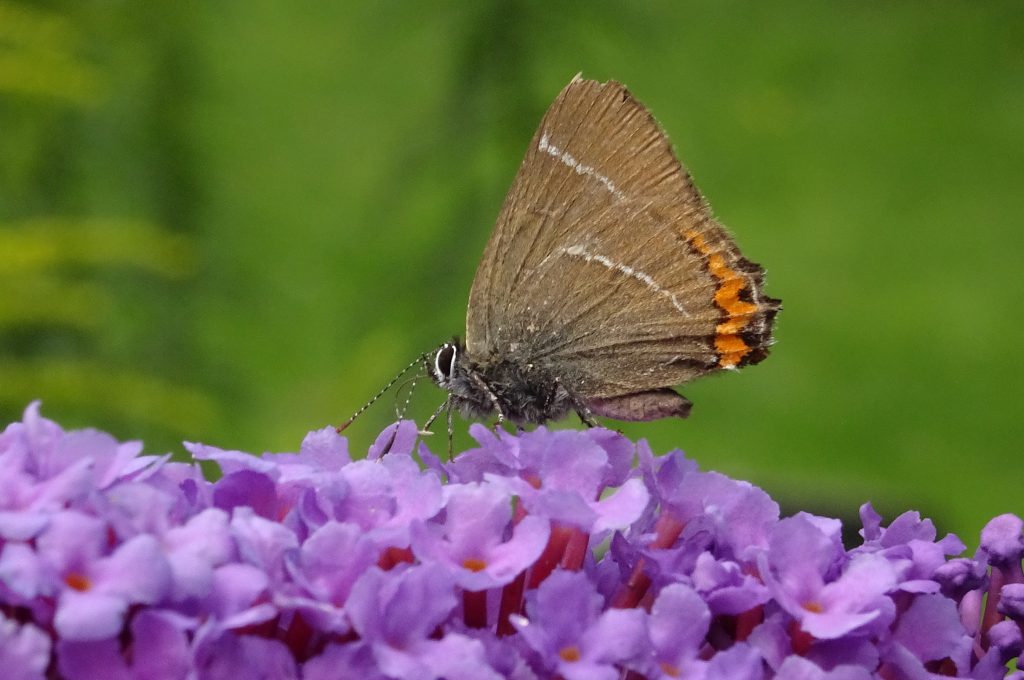
Painted Lady, Vanessa cardui
The Painted Lady is a close relative of the Red Admiral, but it is usually first seen later in the year. It is another migrant and a powerful flier. It migrates from North Africa to southern Europe in spring and then further generations of butterflies move north and colonise Britain, in smaller or greater numbers. At the end of the summer large numbers of Painted Ladies make their way south again, but it is only in recent years that they have been detected doing so, using radar.
The Painted Lady is most likely to occur in Earlham Cemetery in a year when there has been a large influx of the butterfly. 1996 and 2009 were particularly good years.
The large influx of late May 2009 was particularly spectacular and we witnessed a long line of butterflies heading north near Castle Acre in Norfolk, following the hedge line.
Painted Lady caterpillars feed on thistles and their relatives, such as Burdock.
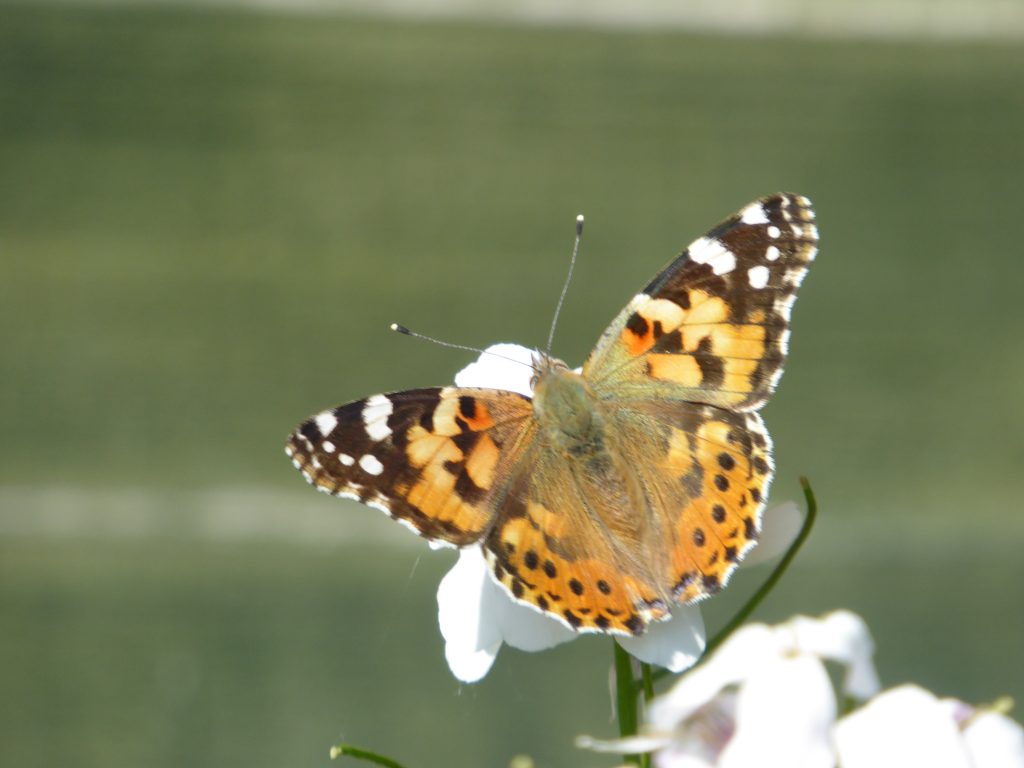
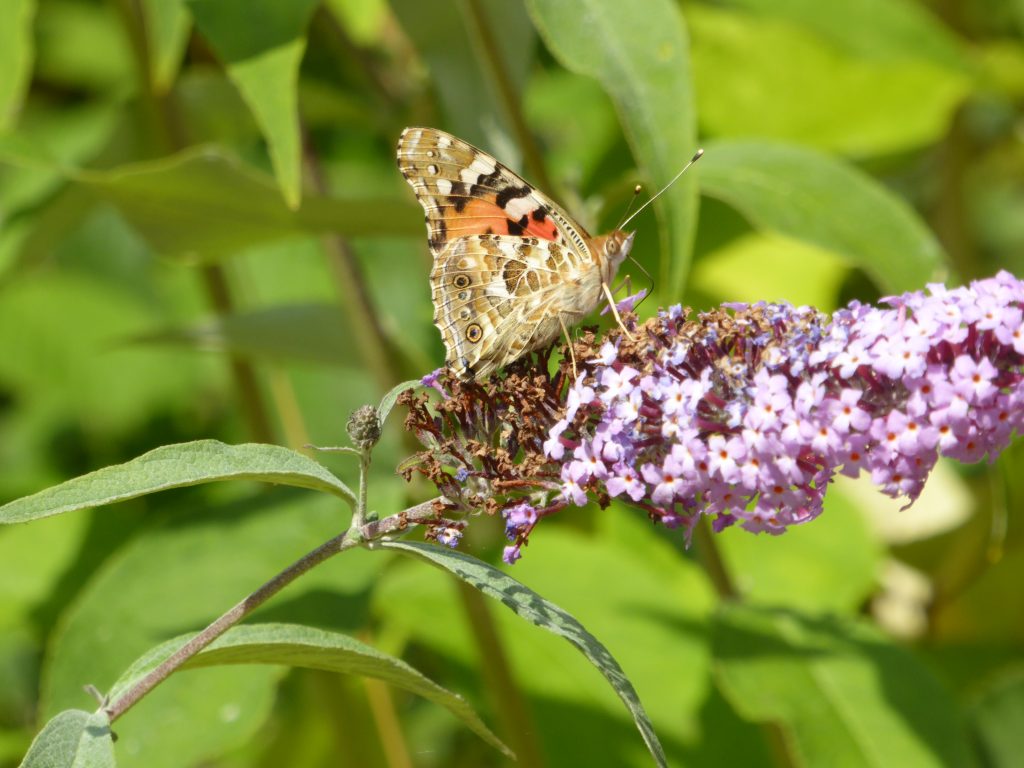
Large Skipper, Ochlodes faunus
By now summer has arrived, along with three species of Skipper butterflies (family Hesperidae). They spent the winter as caterpillars, feeding on fresh grass leaves in the spring and pupating for about a month in late spring. The Skippers are our most primitive family of butterflies and hold their wings in a characteristic pose, with the fore- and hindwings held at different angles, rather like some moths.
The first to appear is the Large Skipper, which flies from very early June to early August. As its name suggests, it is larger than the other two species. It has pretty markings on the wings, making it quite distinctive.
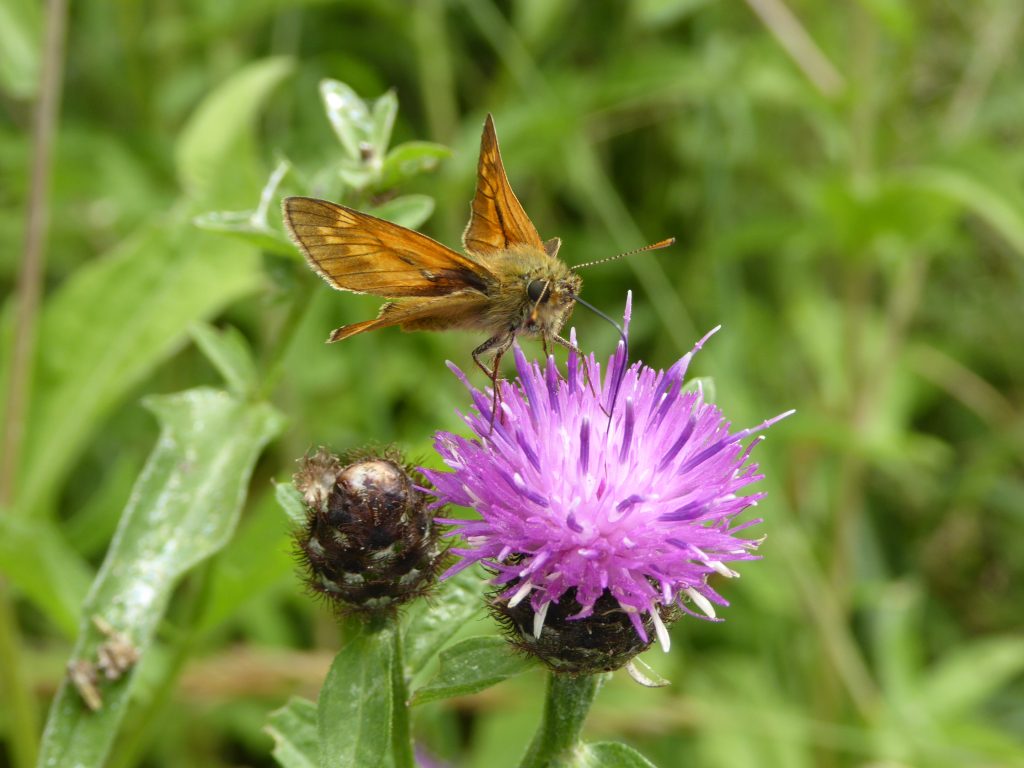
Small Skipper, Thymelicus sylvestris
The Small Skipper is plainer and smaller than the Large Skipper. It is on the wing from late June to mid or late August.
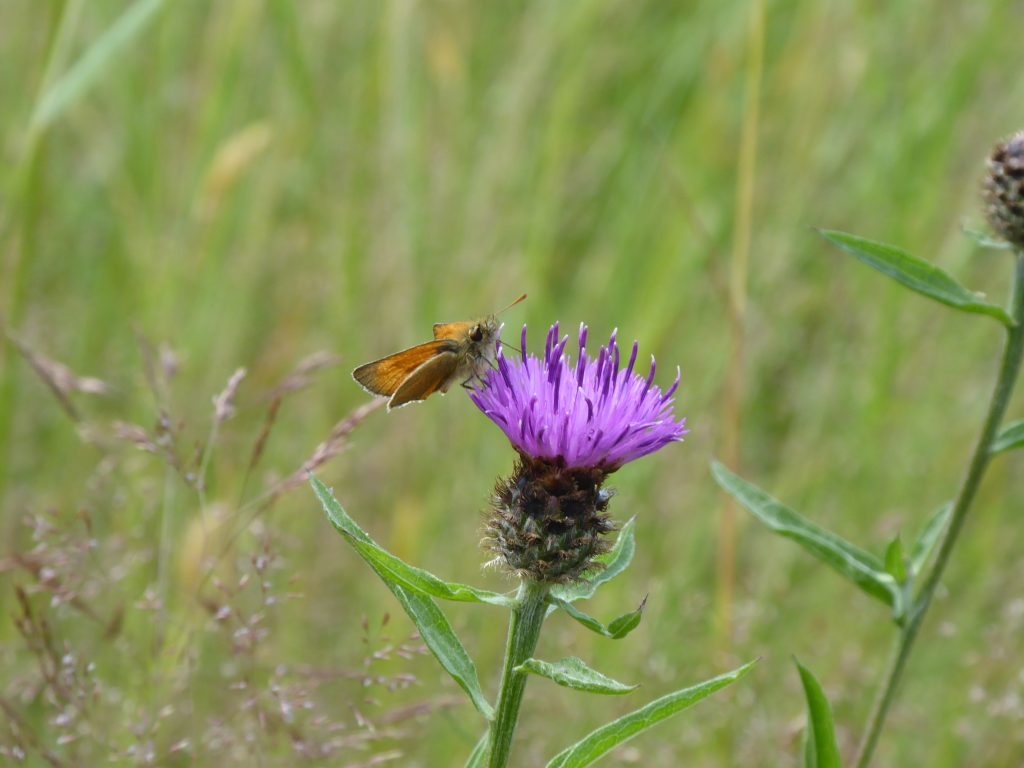
Essex Skipper, Thymelicus lineola
The Essex Skipper is very similar in appearance to the Small Skipper, so much so that it was only recognised as a distinct species in the 19th Century. It is on the wing from early July to late August and appears to be increasing in abundance in the Norwich area.
The Small and Essex Skippers can be told apart by looking carefully at the antennae. In the Small Skipper, the underside of the antennae is orange, while in the Essex Skipper it is a glossy black.
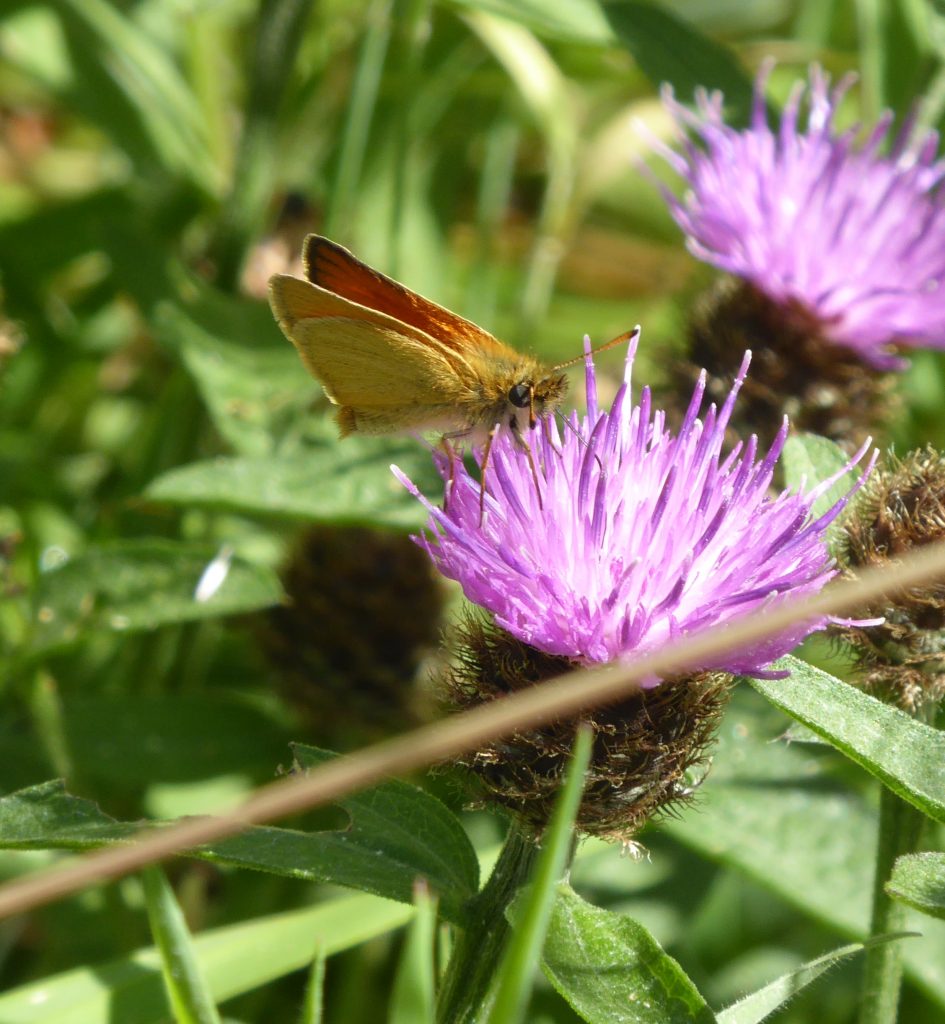
Meadow Brown, Maniola jurtina
The Browns (family Nymphalidae, sub-family Satyrinae) are our other butterflies of high summer. The caterpillars feed on grasses and the butterflies spend the winter as caterpillars. The Speckled Wood, described earlier, is a member of this group of butterflies.
The Meadow Brown usually appears in early June and flies until early September, by which time many butterflies are looking very much the worst for wear. Like the Ringlet, it has a fairly weak, floppy flight, as if the summer heat is a bit much for it.
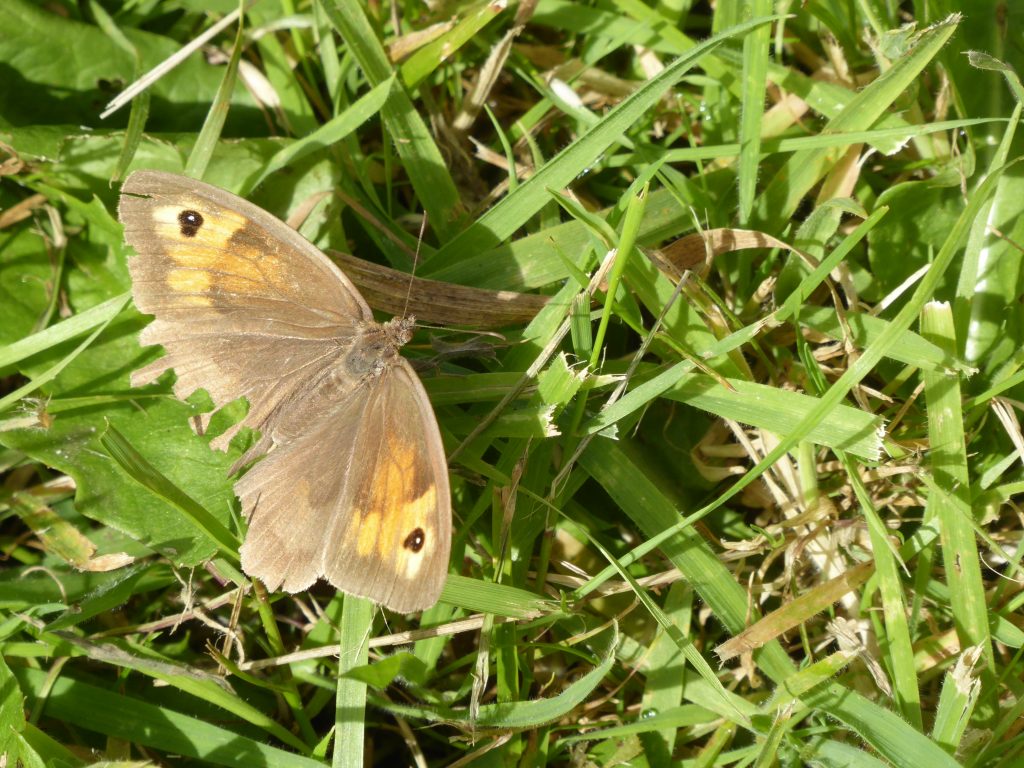
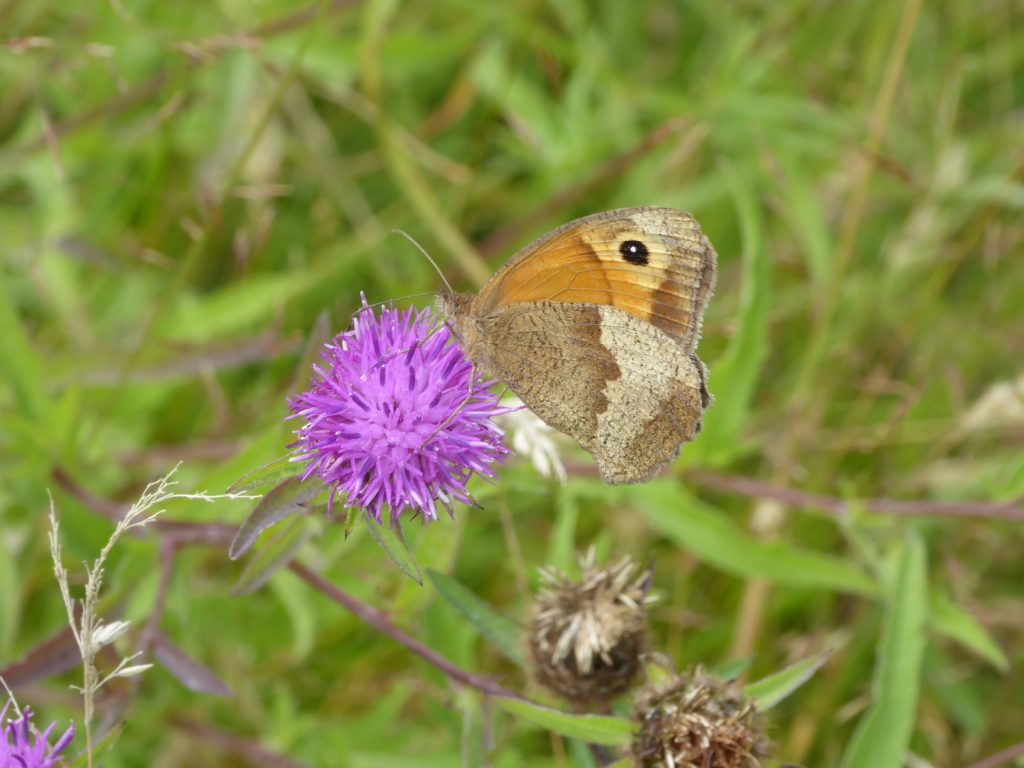
Ringlet, Aphantopus hyperantus
The Ringlet was first seen in Earlham Cemetery in 1996 and has been present every year from 2004. It is now abundant in its flight period, from June to early August, and is increasing its range in the north of the British Isles. It has a floppy flight like the Meadow Brown and is of a similar size, but it appears darker.The name comes from the markings on the underside of the wings. These are even more pronounced in northern specimens.
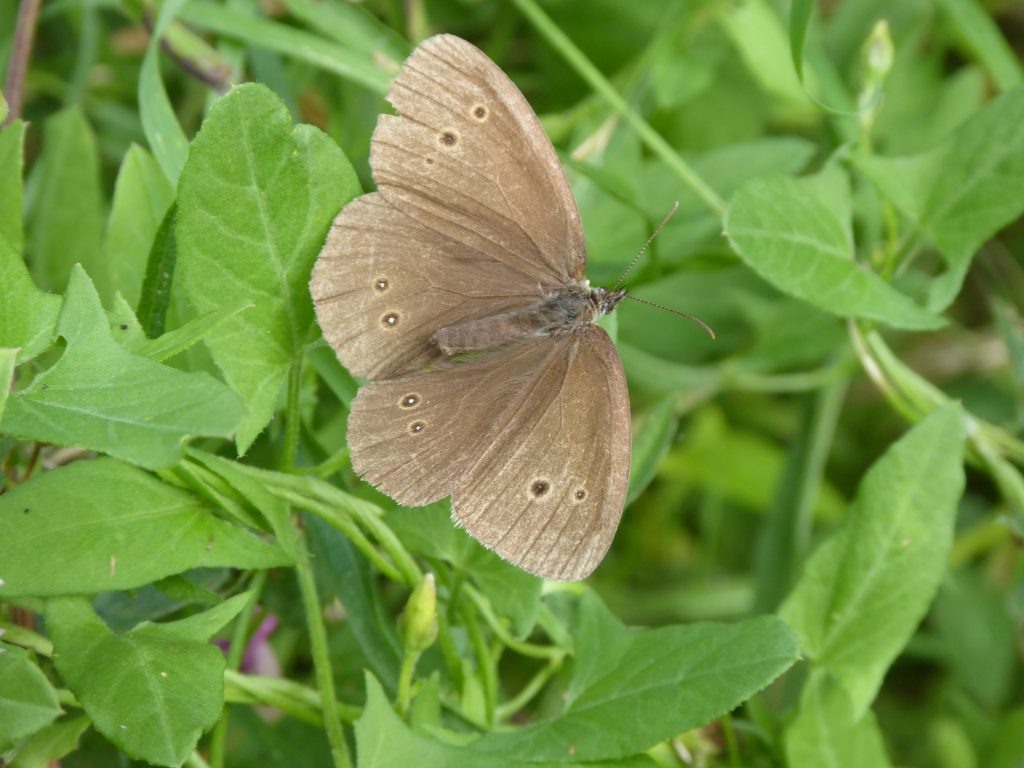
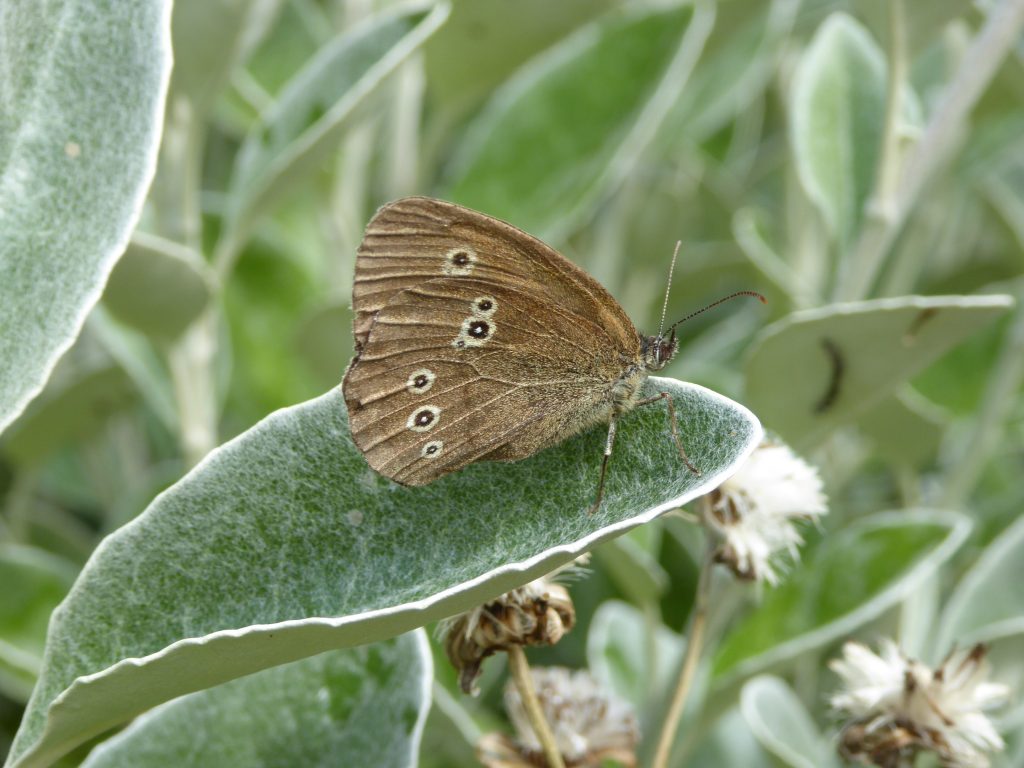
Gatekeeper, Pyronia tithonus
The Gatekeeper is like a smaller, faster, prettier Meadow Brown. It loves sunny, flowery places and is particularly attracted to plants like Bramble, Marjoram and Ragwort. It flies from July to early September.
Sometimes known as the Hedge Brown, it is plentiful in Earlham Cemetery.
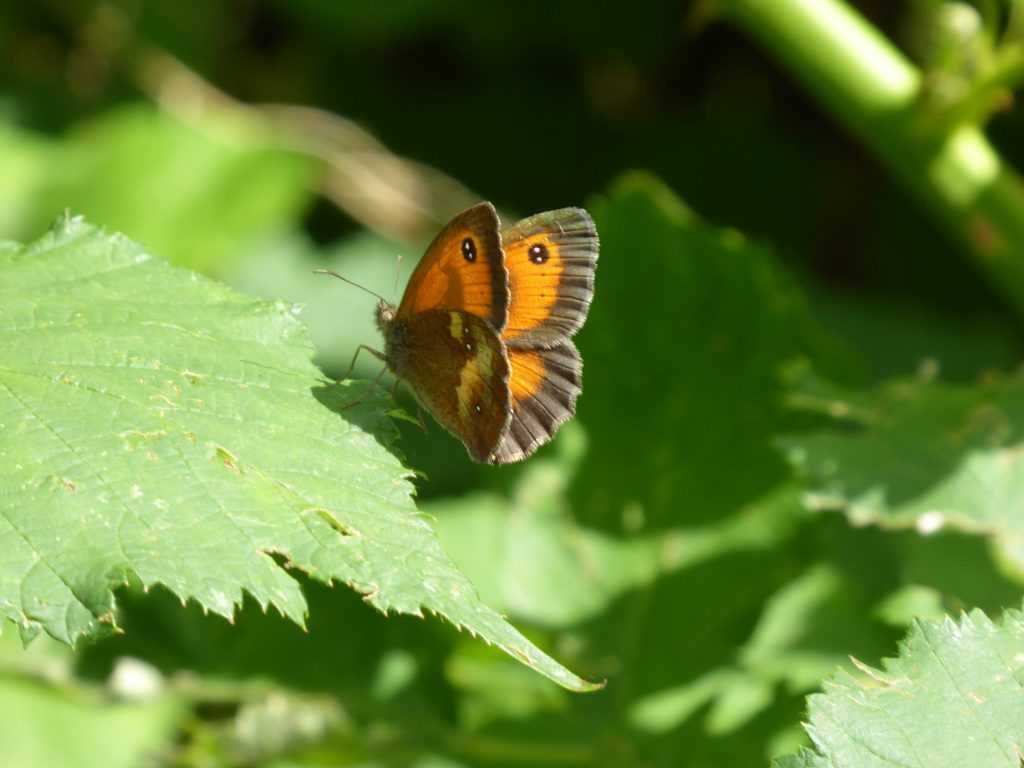
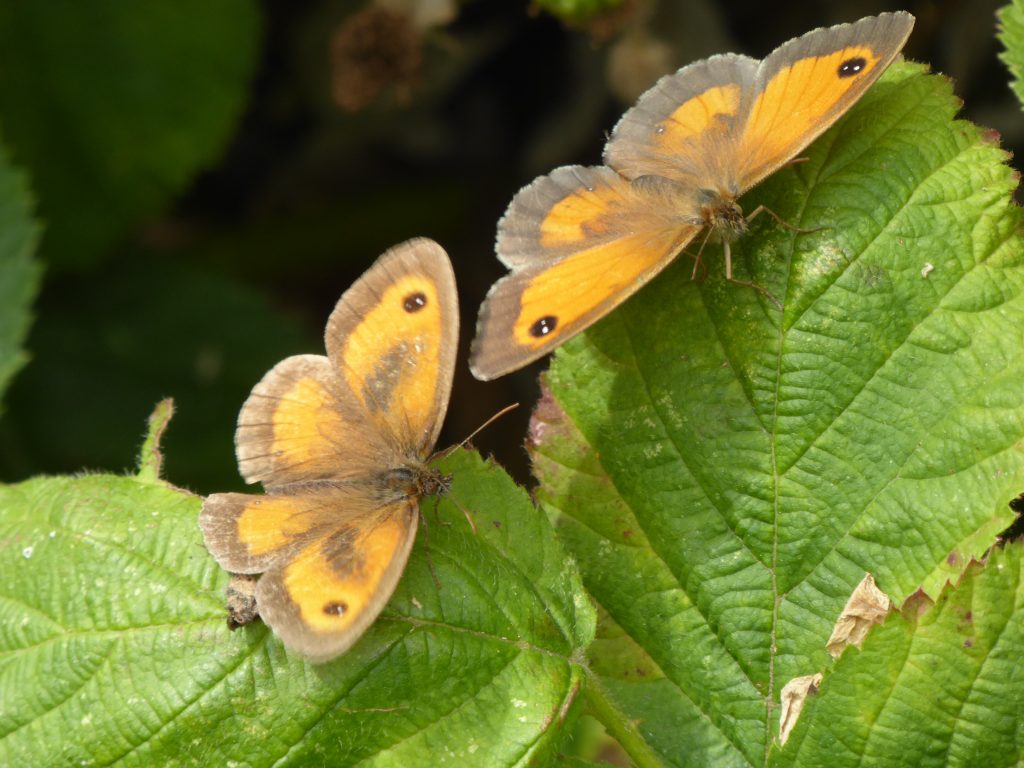
Small Heath, Coenonympha pamphilus
In August 2022, at the height of the summer drought, all mowing ceased in Earlham Cemetery, because of the risk of a grassland fire being accidentally started. This resulted in swathes of flowers and these attracted Common Blue and Small Copper butterflies, plus a new species for the Cemetery – the Small Heath.
The Small Heath is on the wing from May till October. The first brood appears in May, June and July, and a partial second brood occurs in August and September. The larvae feed on grasses. The butterflies will fly up when disturbed and then land, always with their wings closed.
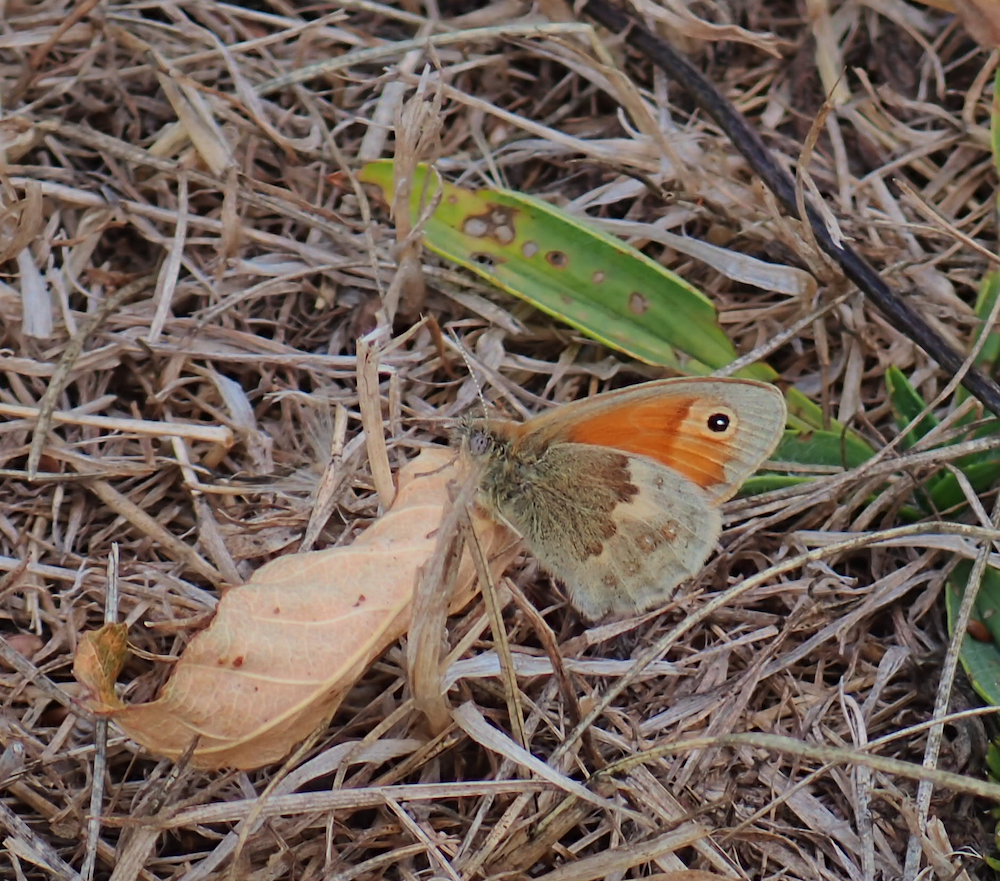
Wall, Lasiommata megera
In the 1980s, the Wall (or Wall Brown) was a plentiful butterfly in Norwich. But the last one in Earlham Cemetery was seen in 1995 and the species has declined in southern and central England. In Norfolk it can still be found near the coast.
Like other Browns, the caterpillars feed on grasses. However, it is thought that, as the climate has warmed, the Wall has started to have a third brood. This survives near the coast, where the climate is milder, but dies off further inland, leading to a decline in the species.
The Wall is a very attractive butterfly and it is sad that it is no longer in Norwich*. It is definitely worth a trip to the coast to see it – Holkham is a good spot.
* Although a single individual was seen at Carey’s Meadow in 2022, presumably a wanderer from further down the Yare valley.
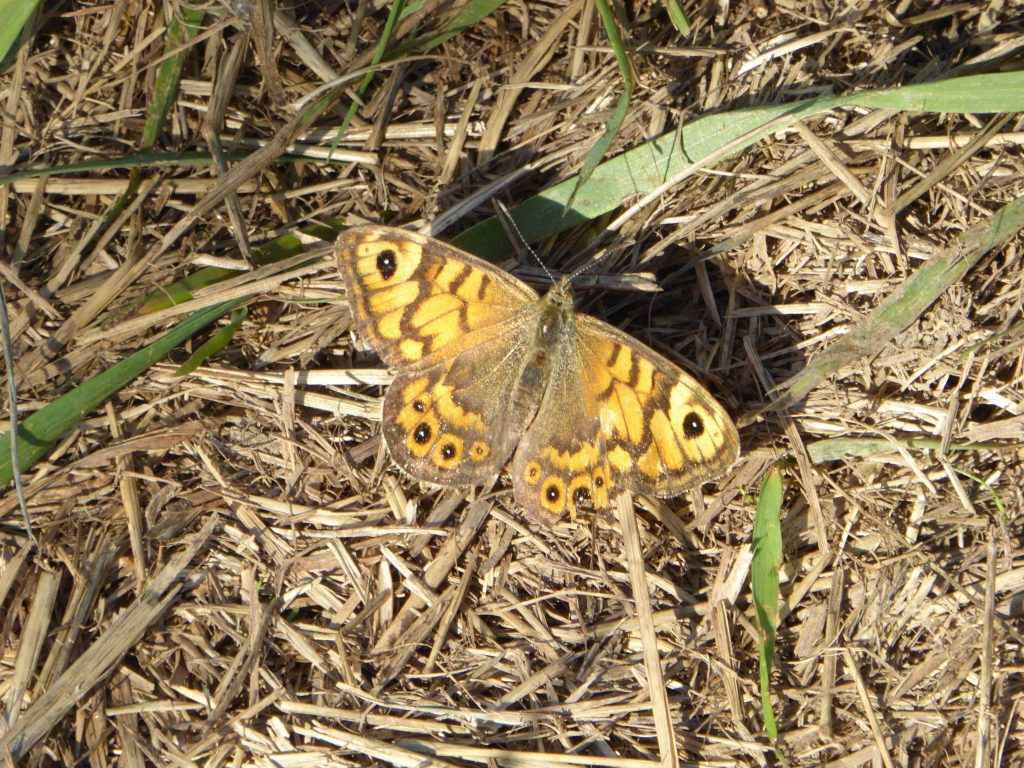
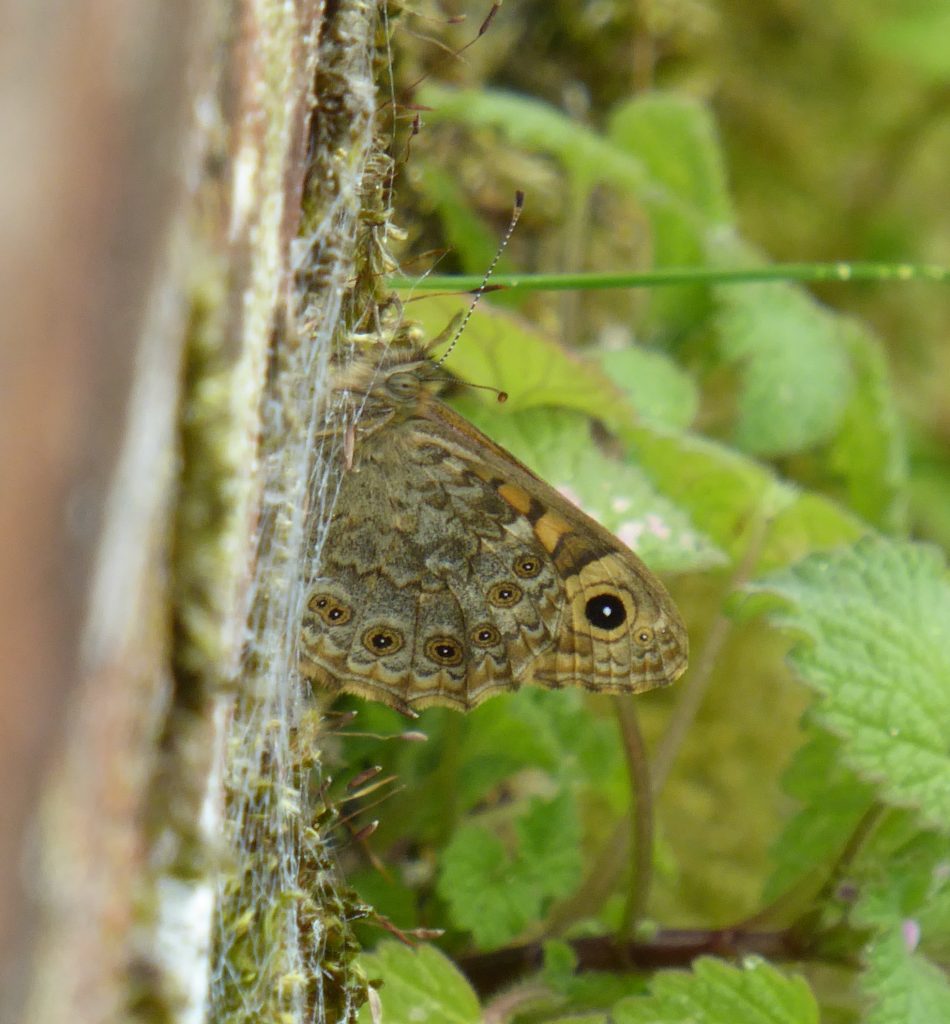
Silver-washed Fritillary, Argynnis paphia
The final species is our largest species of fritillary, a member of the family Nymphalidae.
For many years the Silver-washed Fritillary was absent from Norfolk but in recent years it has recolonised the county. It is a woodland species, whose caterpillars feed on violets. It flies from late June to August in sunny woodland glades.
In some years Silver-washed Fritillaries range far and wide, and this is presumably how they recolonised Norfolk. In 2010 an individual was seen in Heigham Park and then on 15 August 2015, one was seen on one of our regular walks in the Cemetery. Another was recorded in 2017. In 2022 Colin Smith photographed a male on 22 June and other single specimens were seen in July and early August. In 2023 Ruth Cole saw one on 12 July.
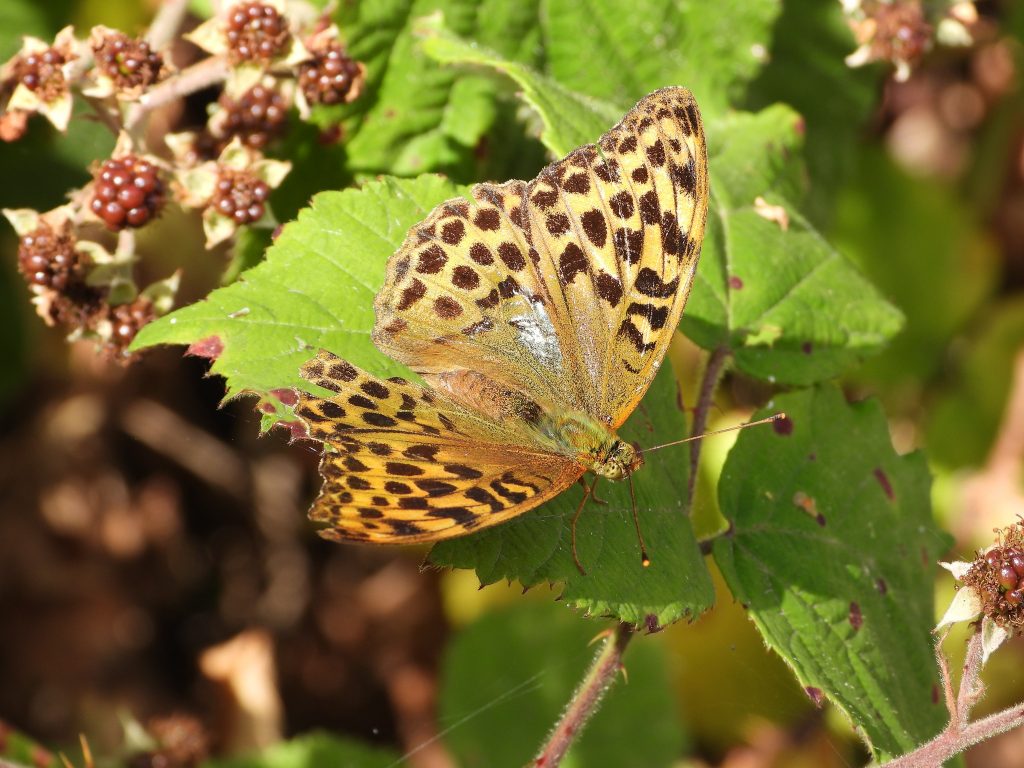
Further Information
UK Butterflies website: www.ukbutterflies.co.uk.
Butterfly Conservation website: https://butterfly-conservation.org.
“The Butterflies of Britain and Ireland” by Jeremy Thomas and Richard Lewington (British Wildlife Publishing 2014).
The Field Studies Council identification guide is laminated and costs £4: https://www.field-studies-council.org/shop/publications/butterflies-guide/.
Jeremy Bartlett.
